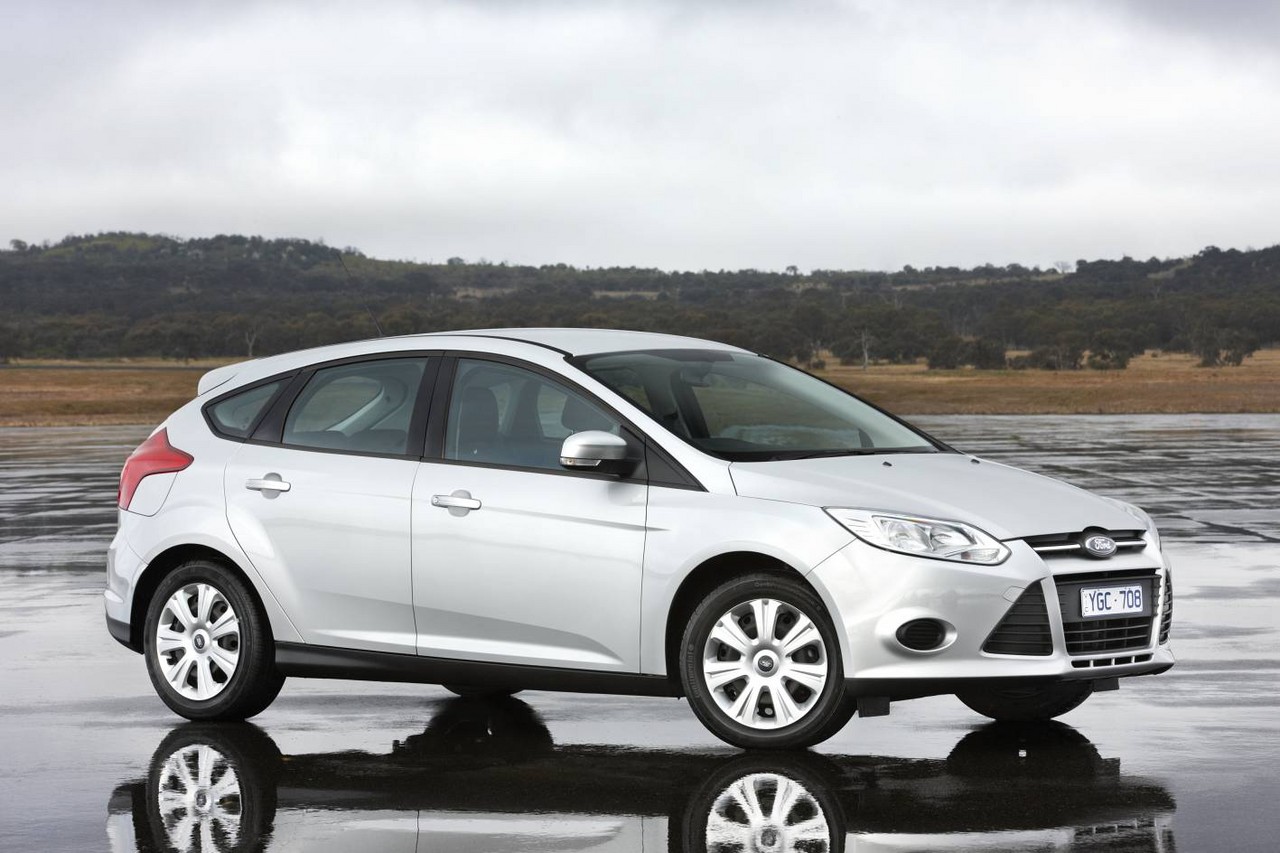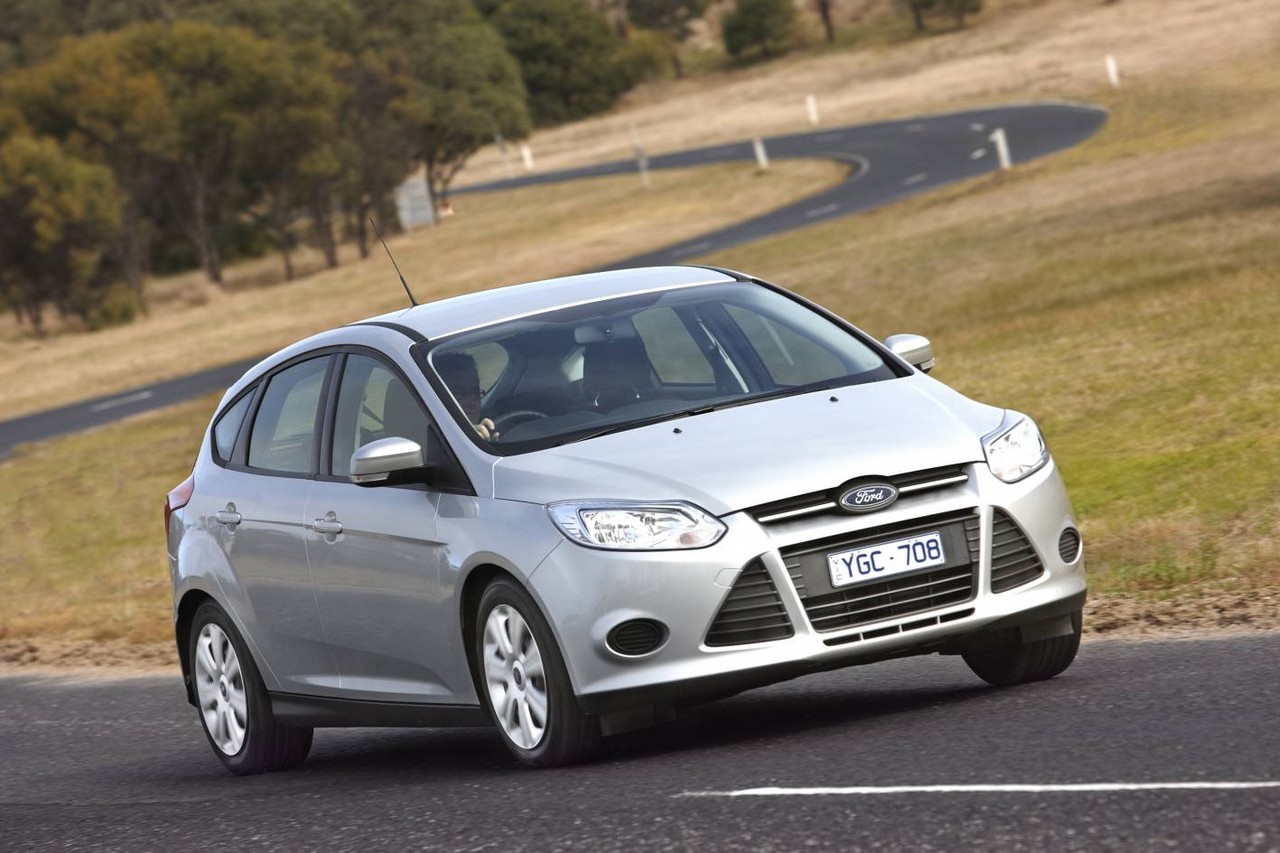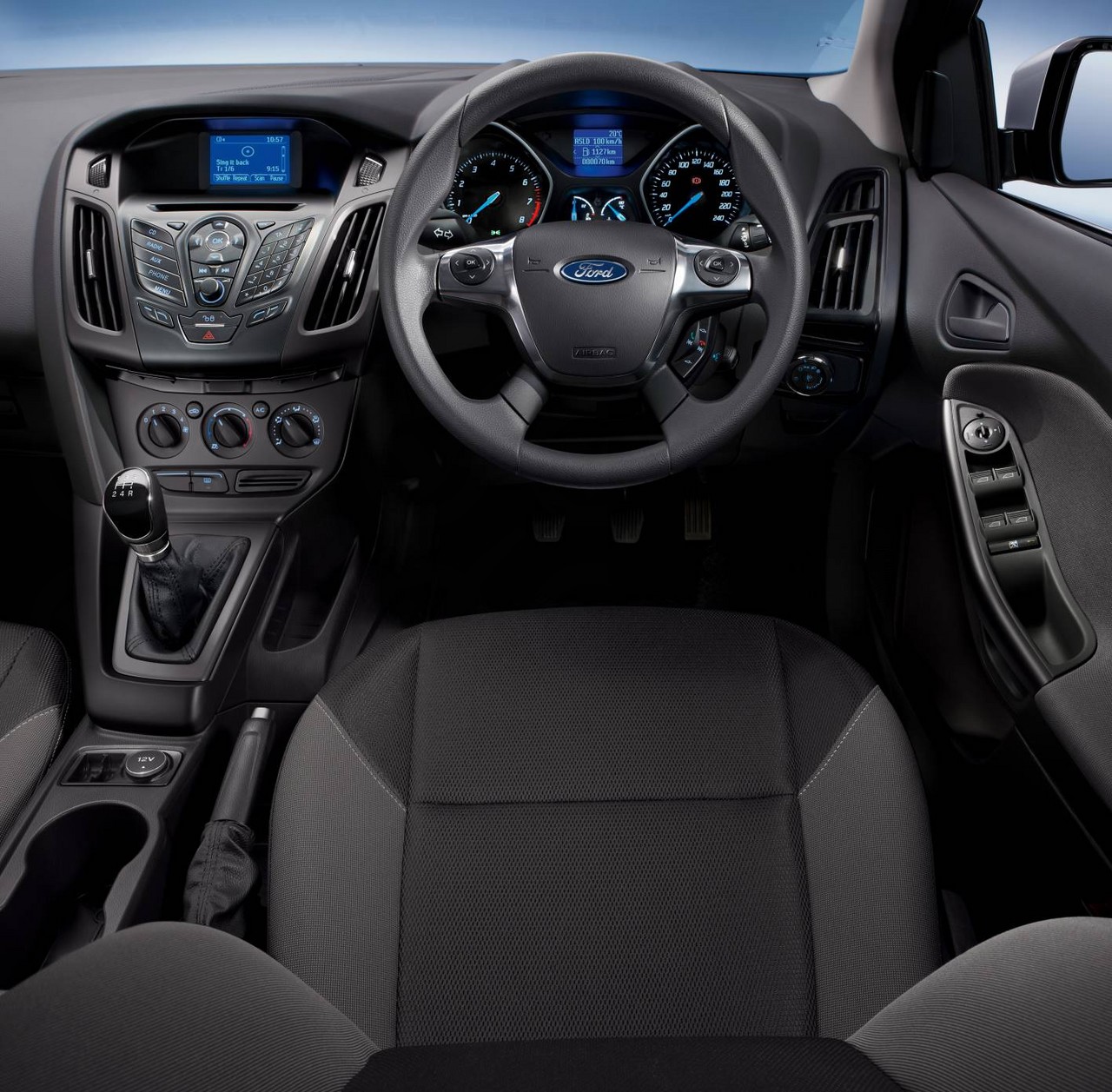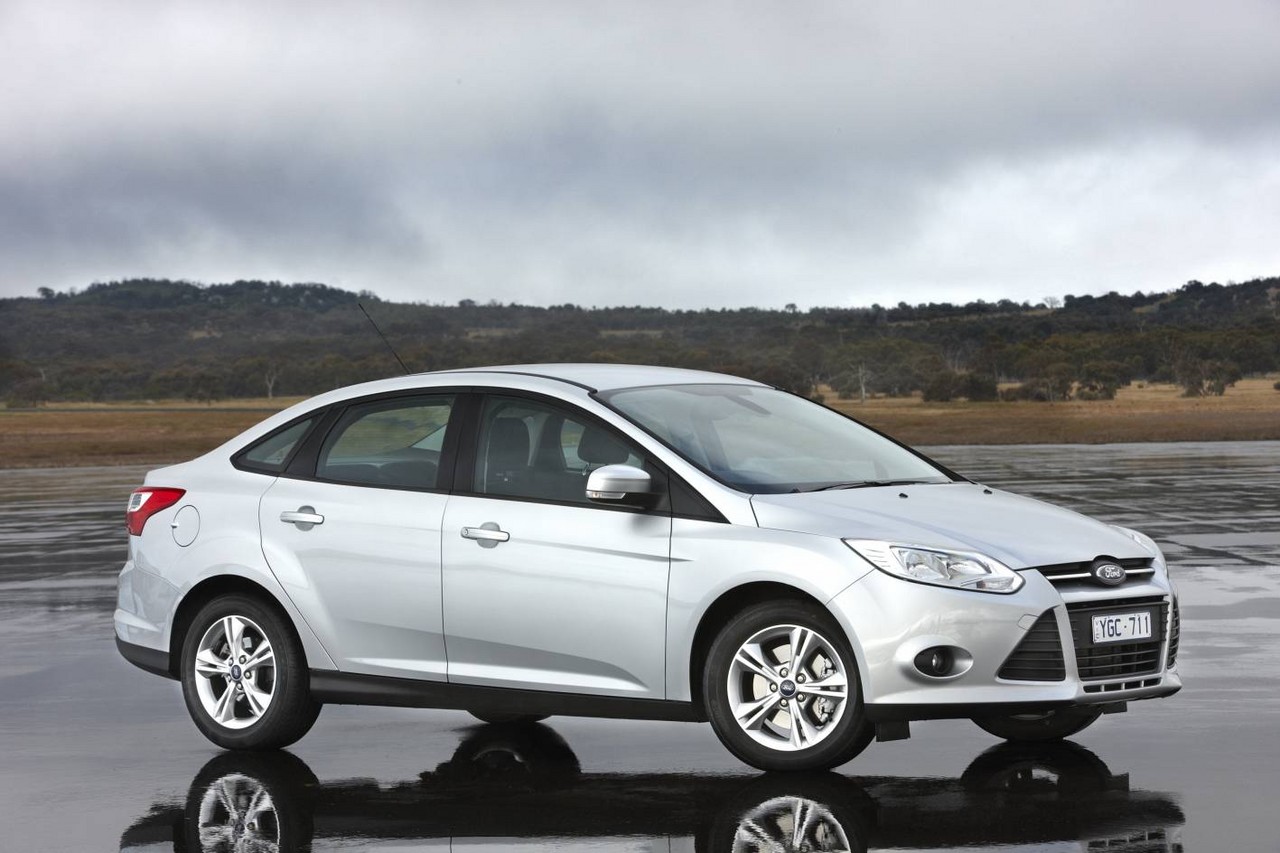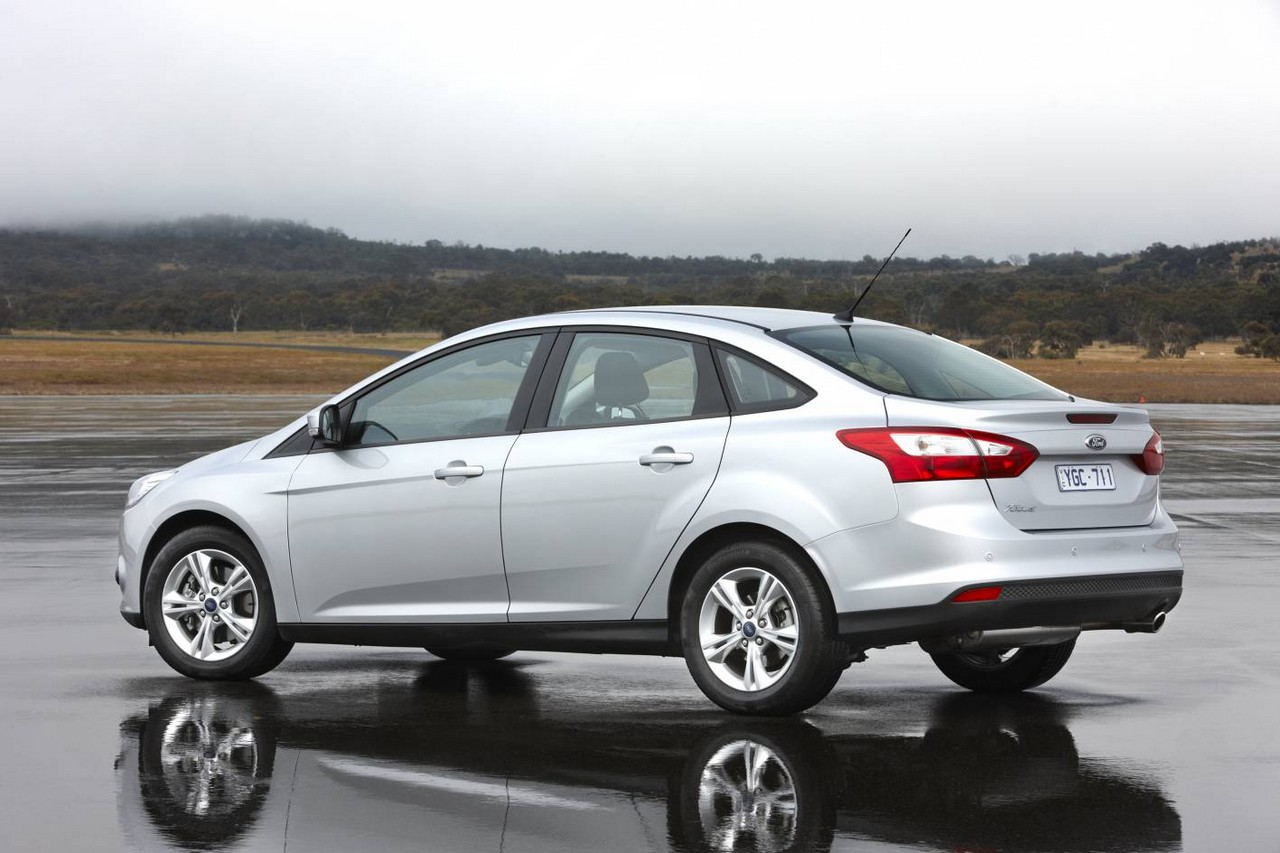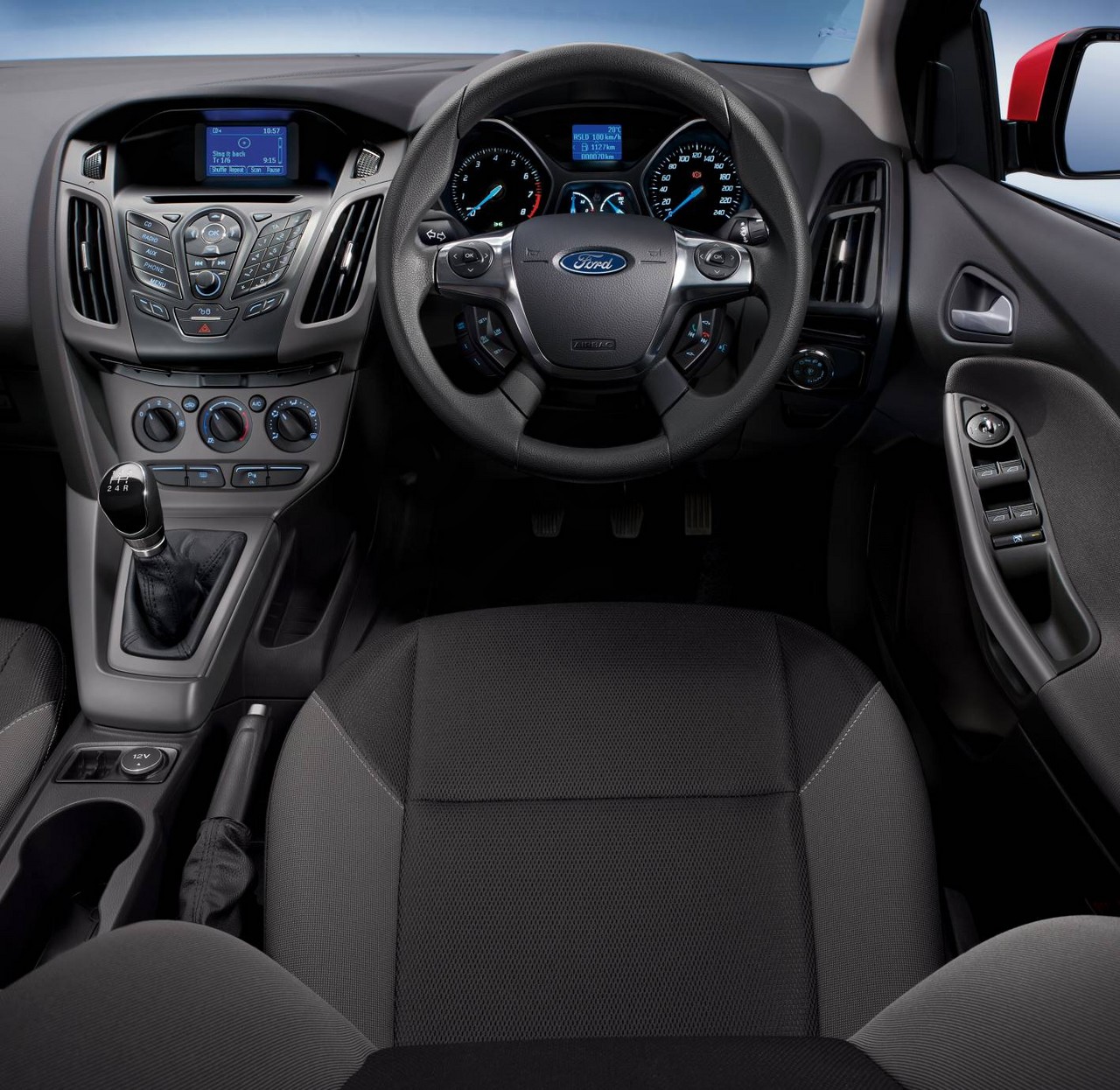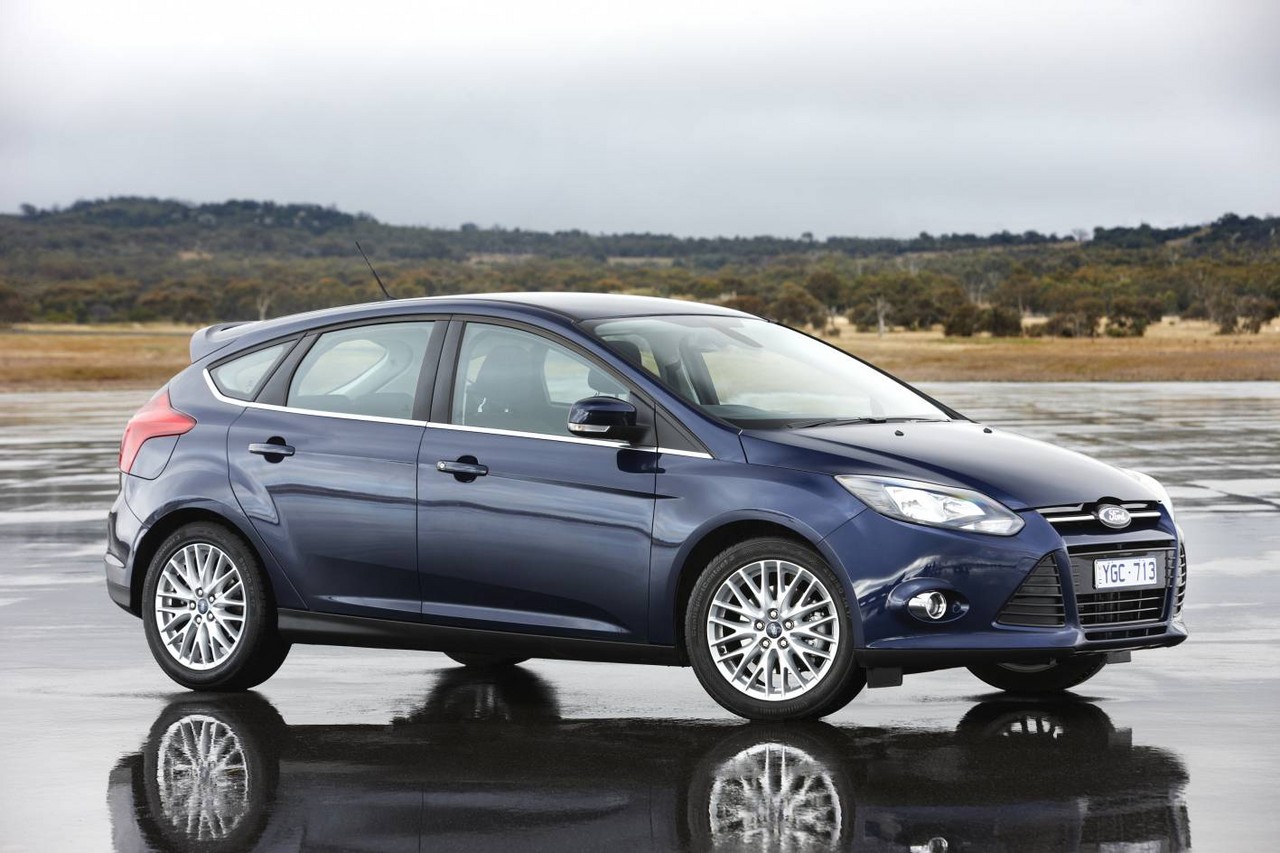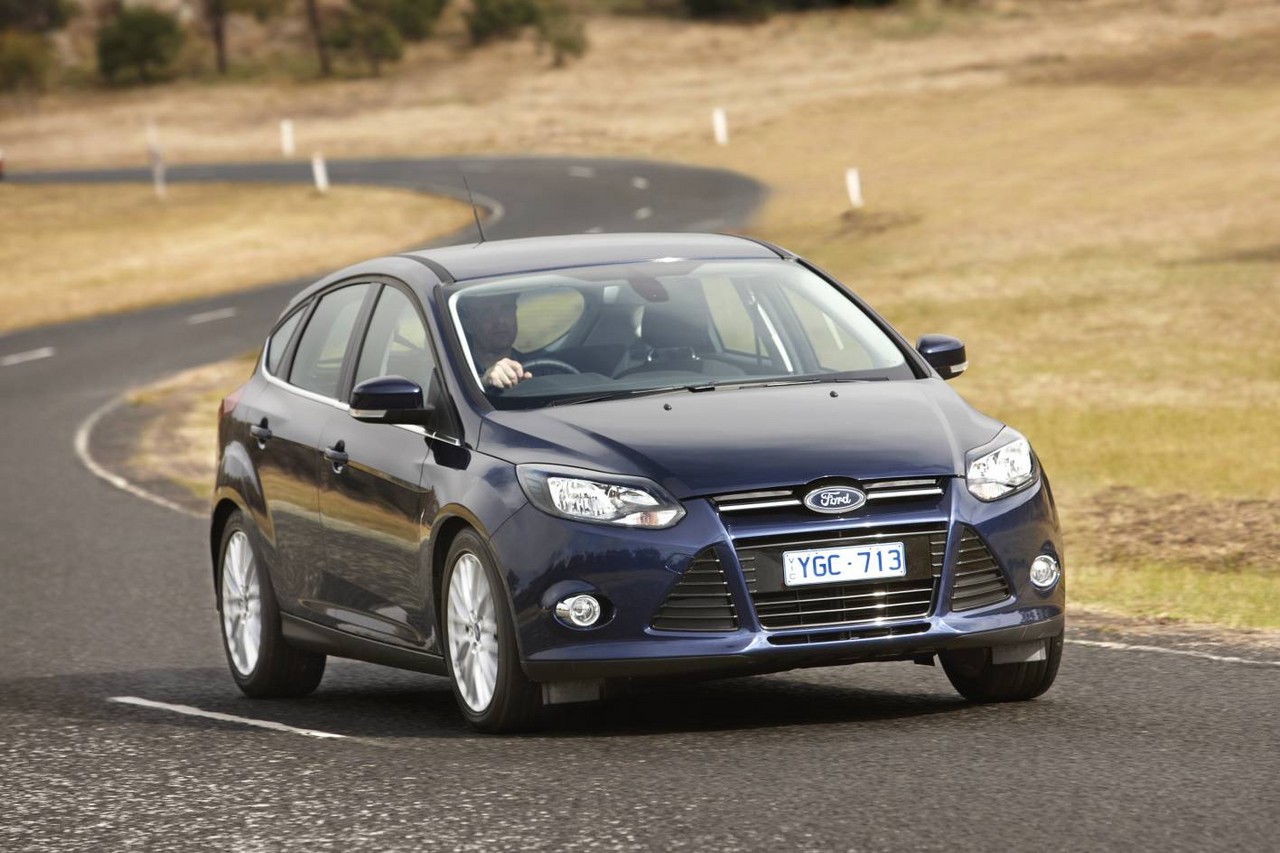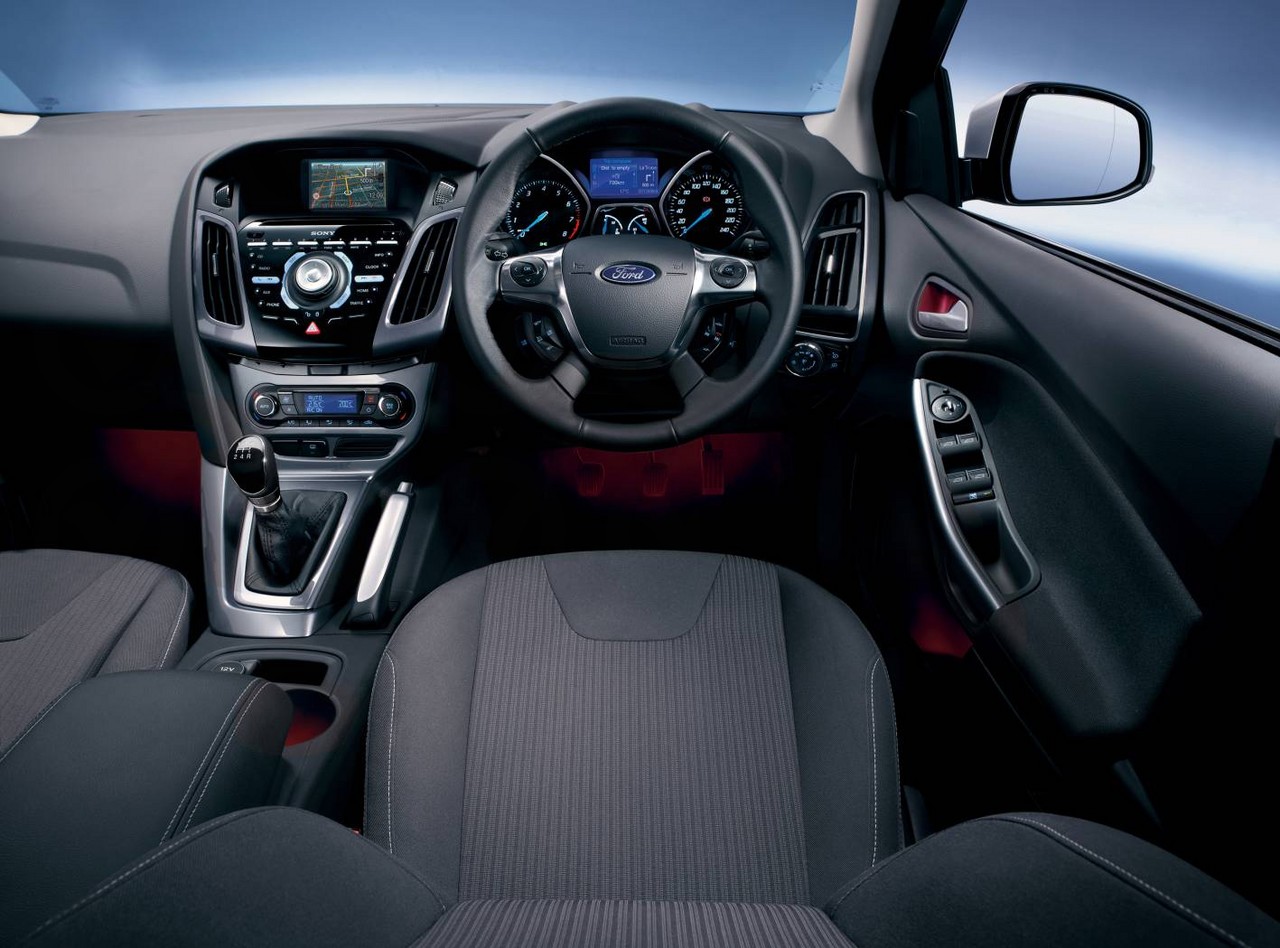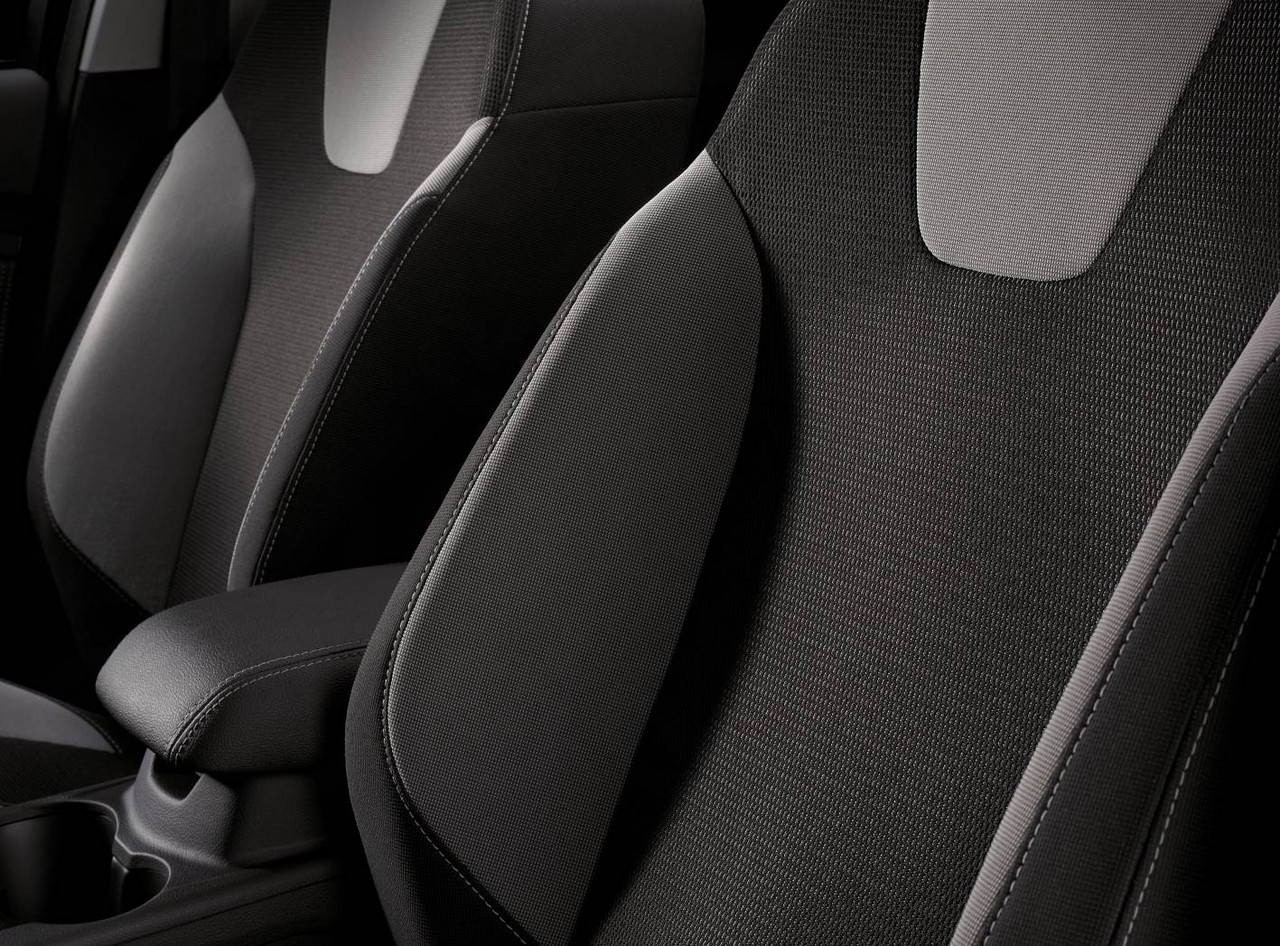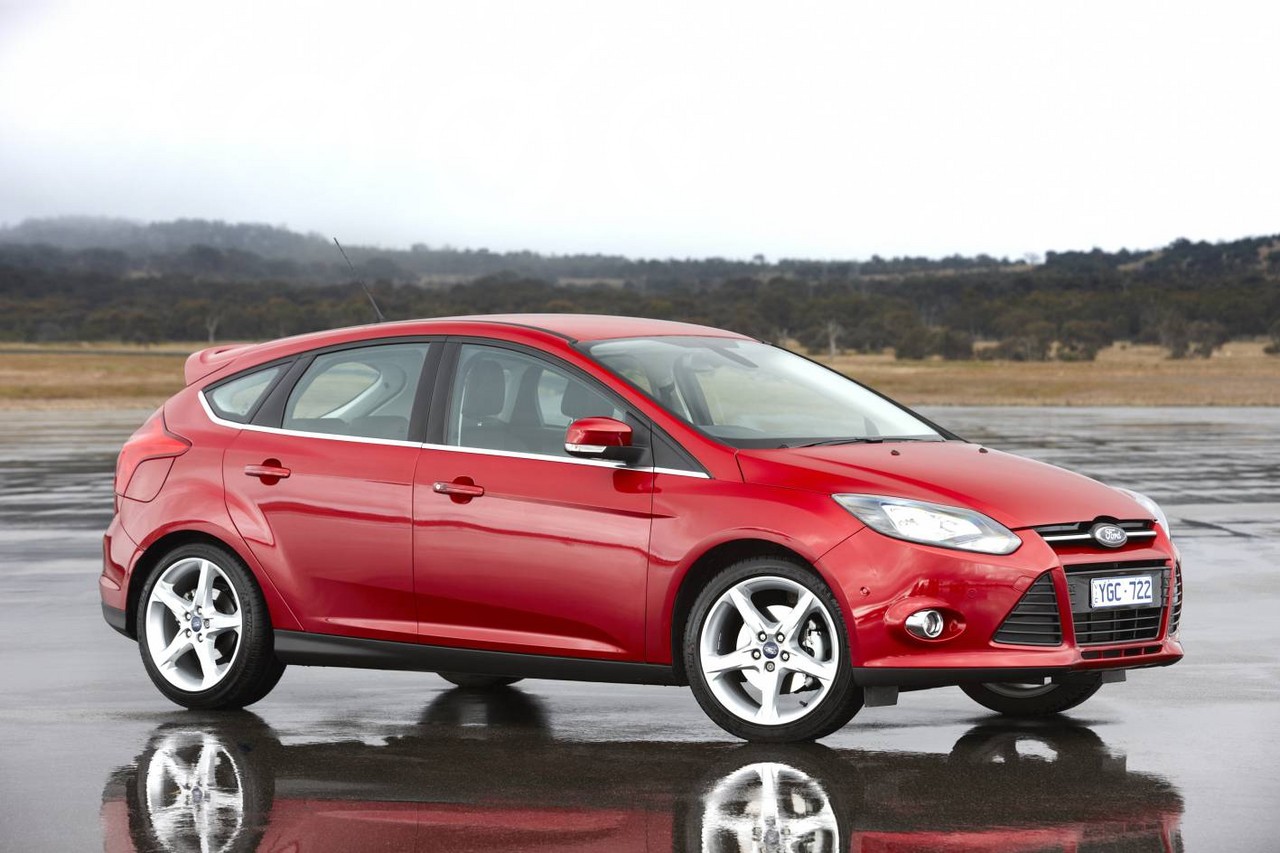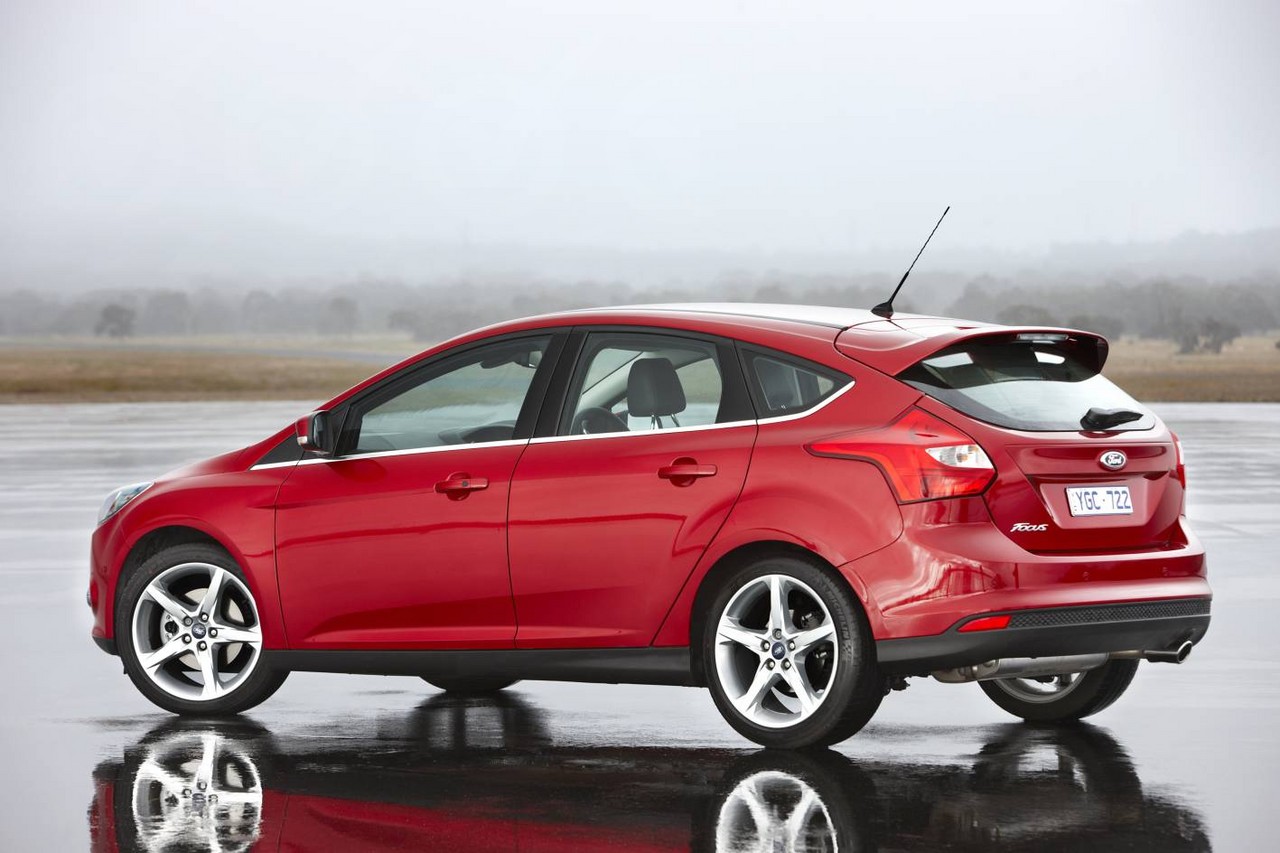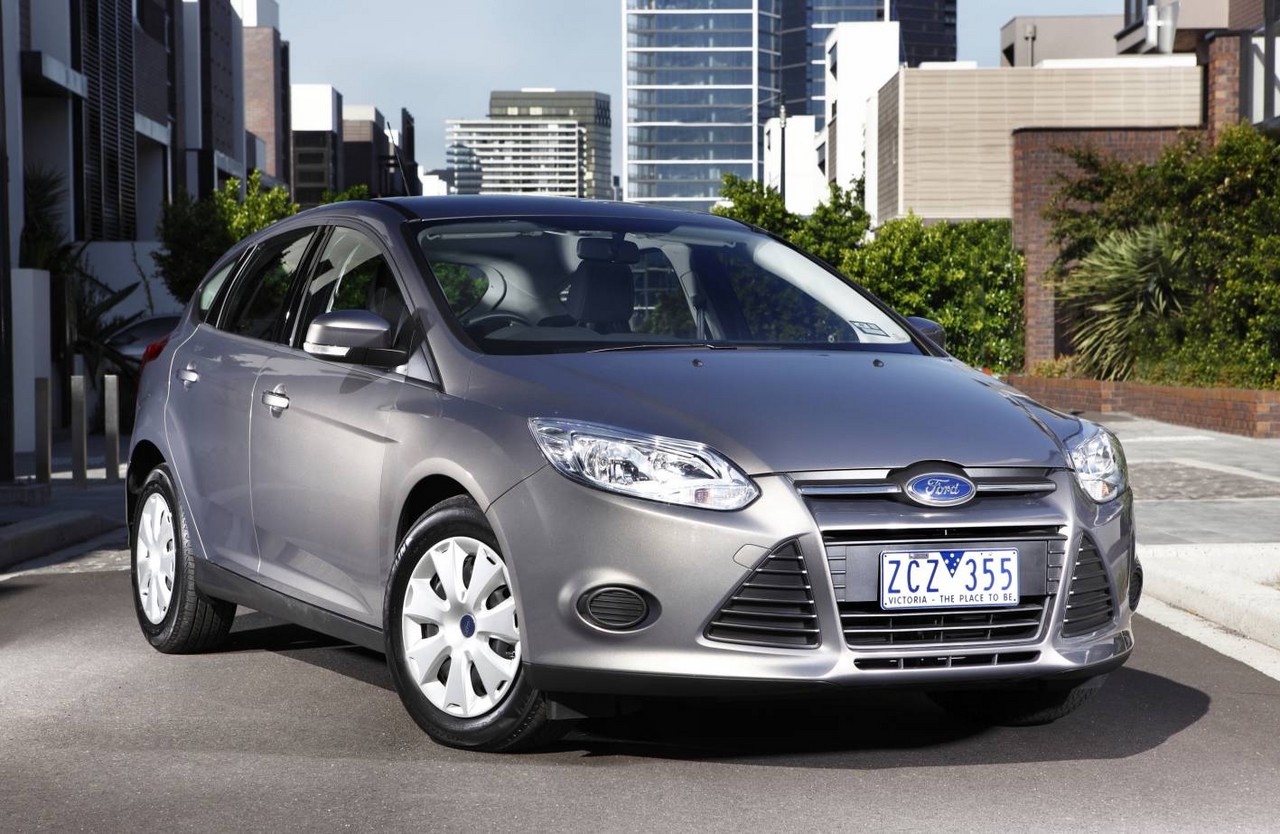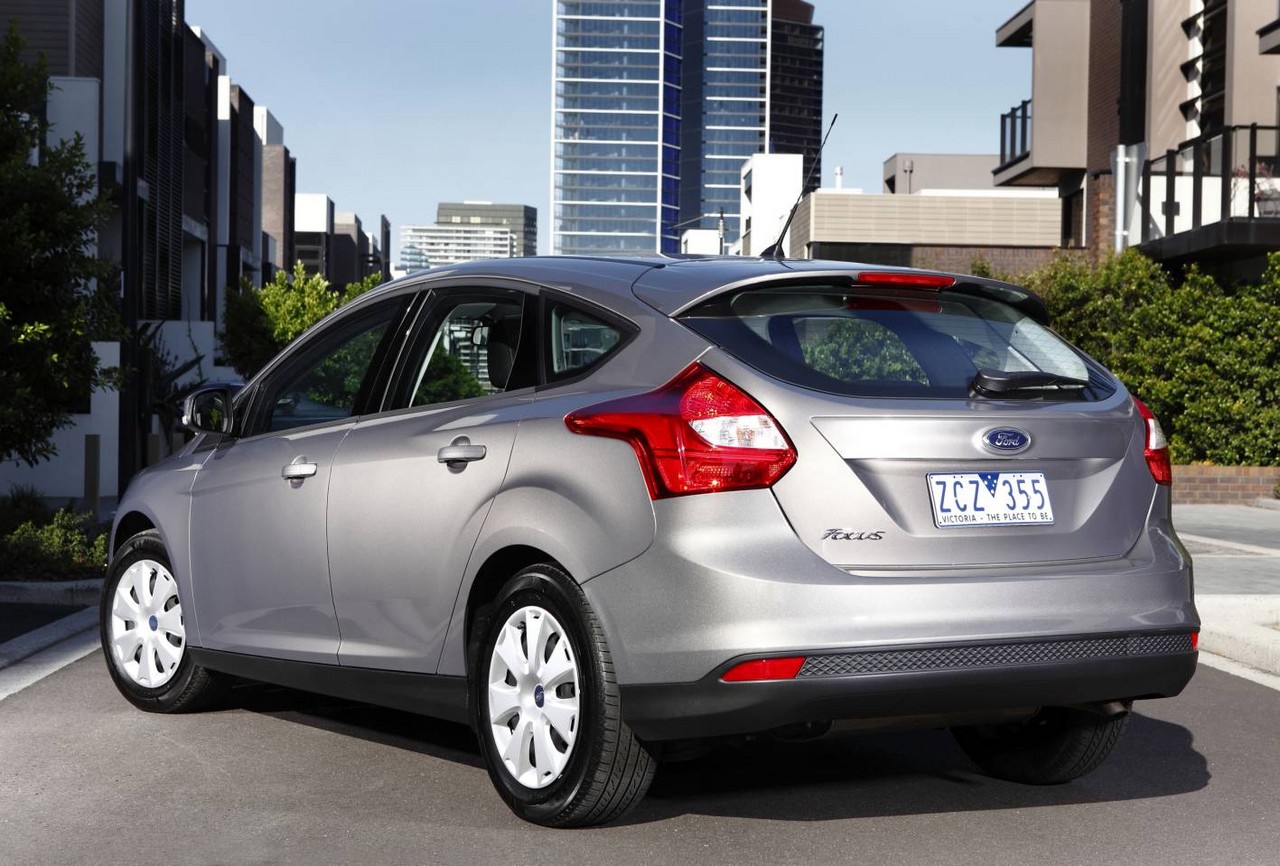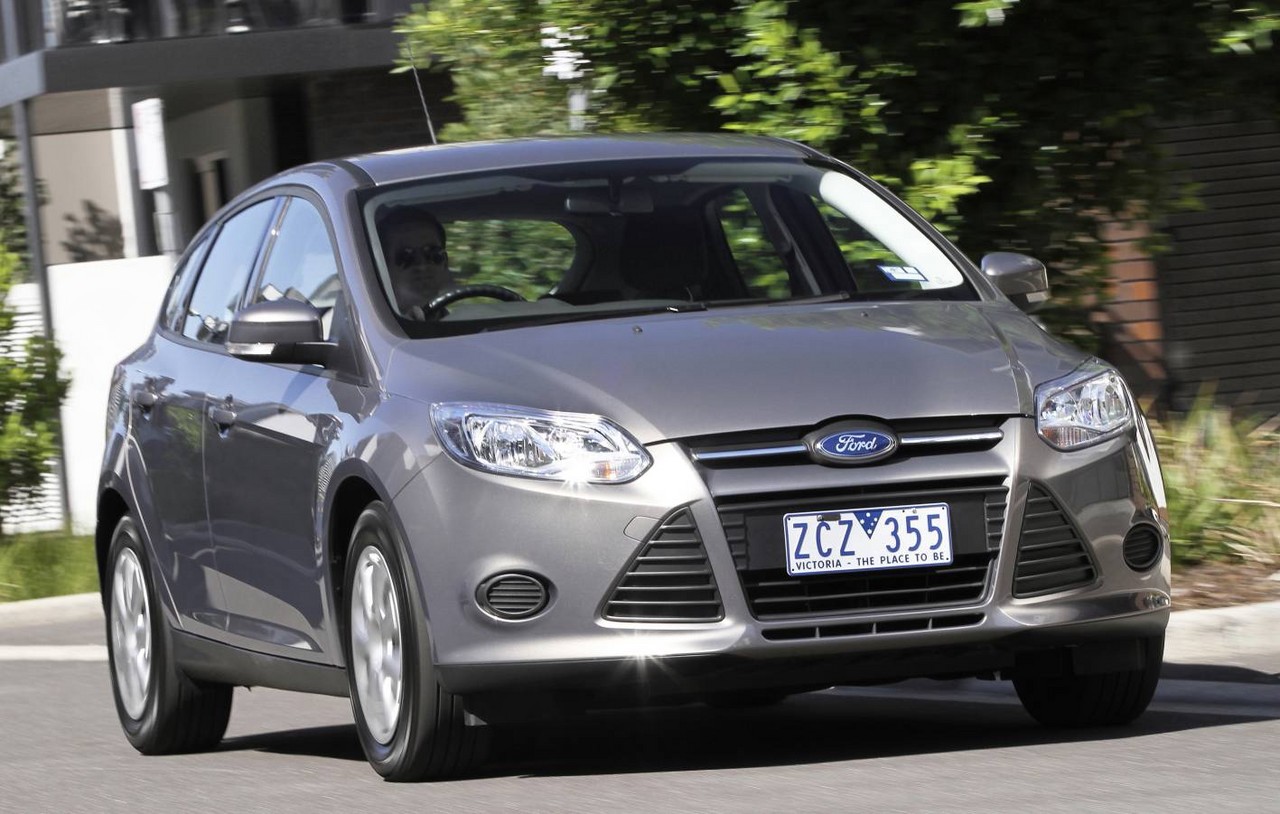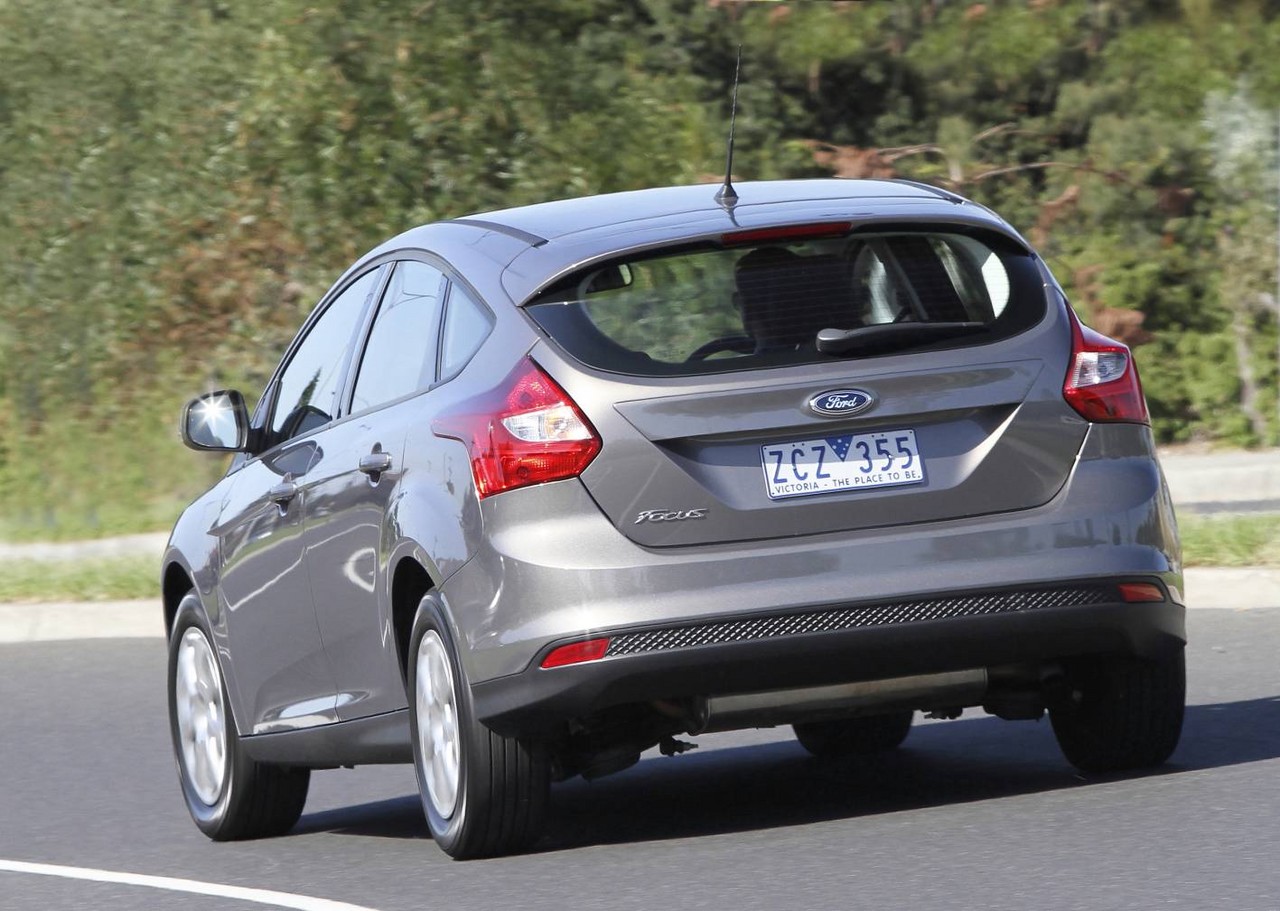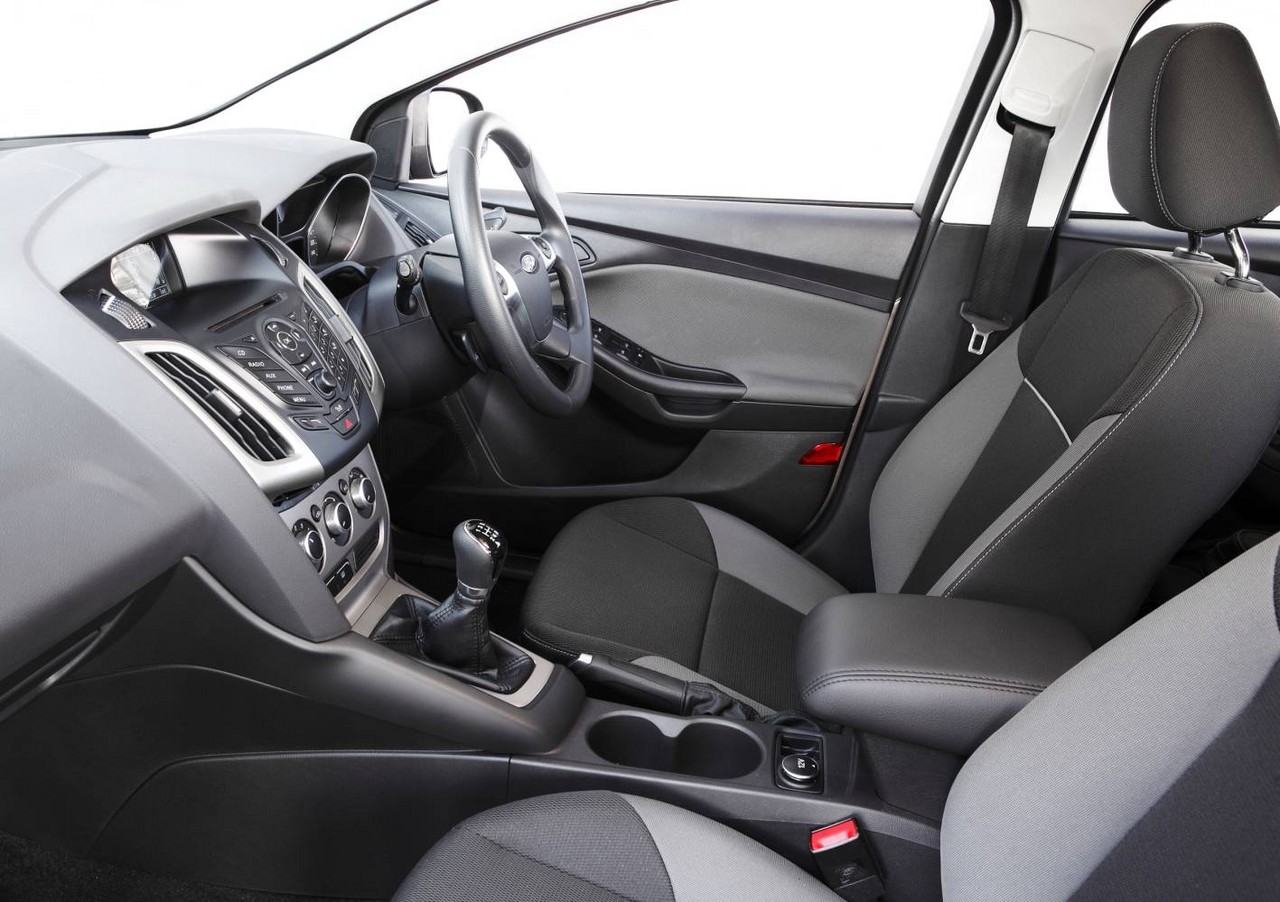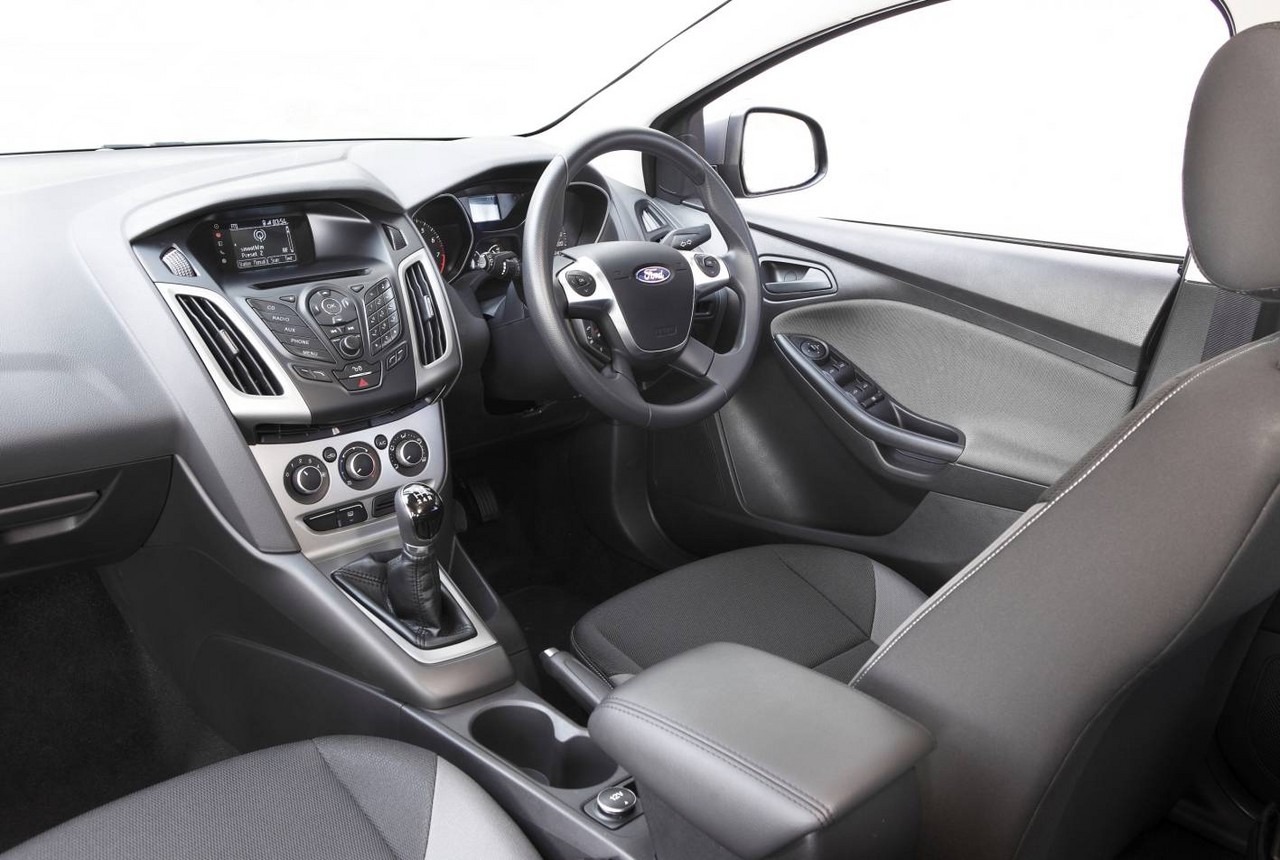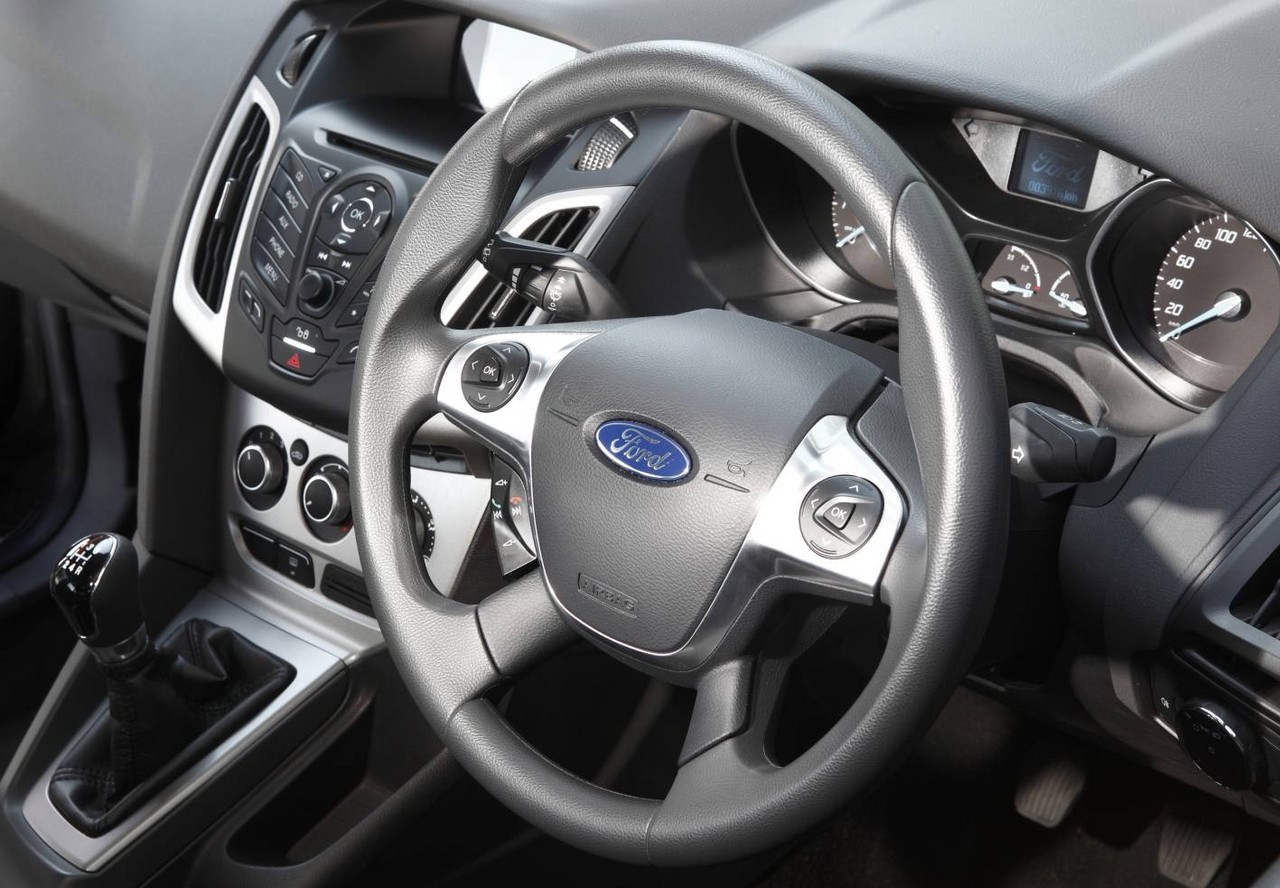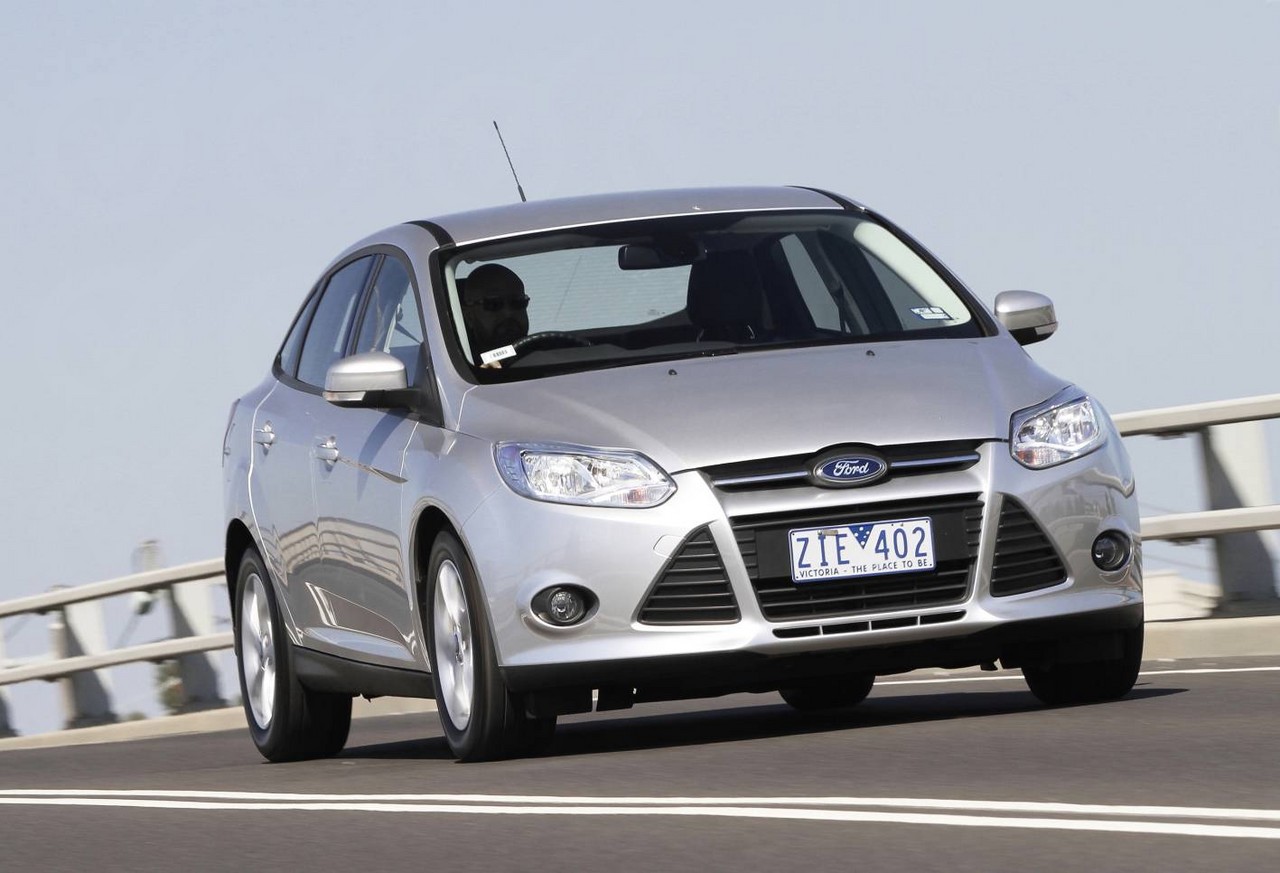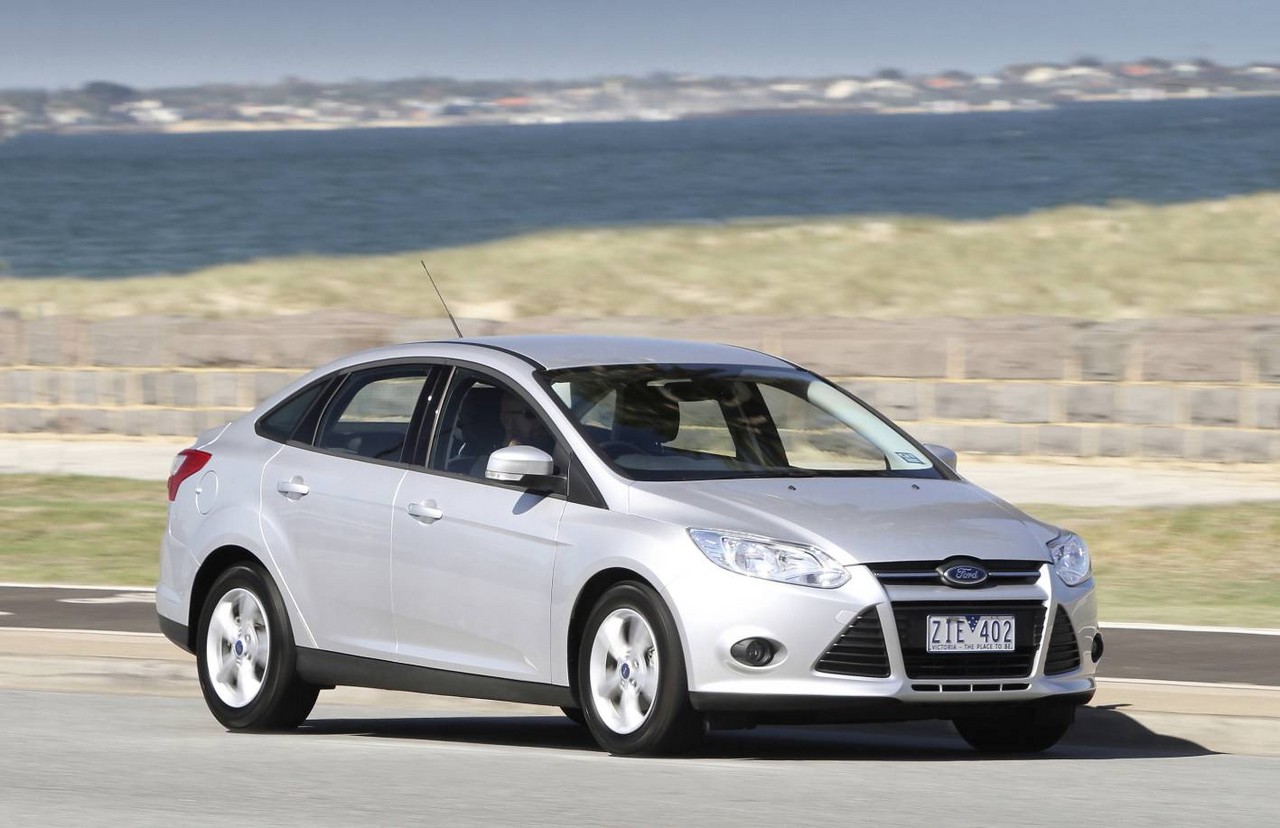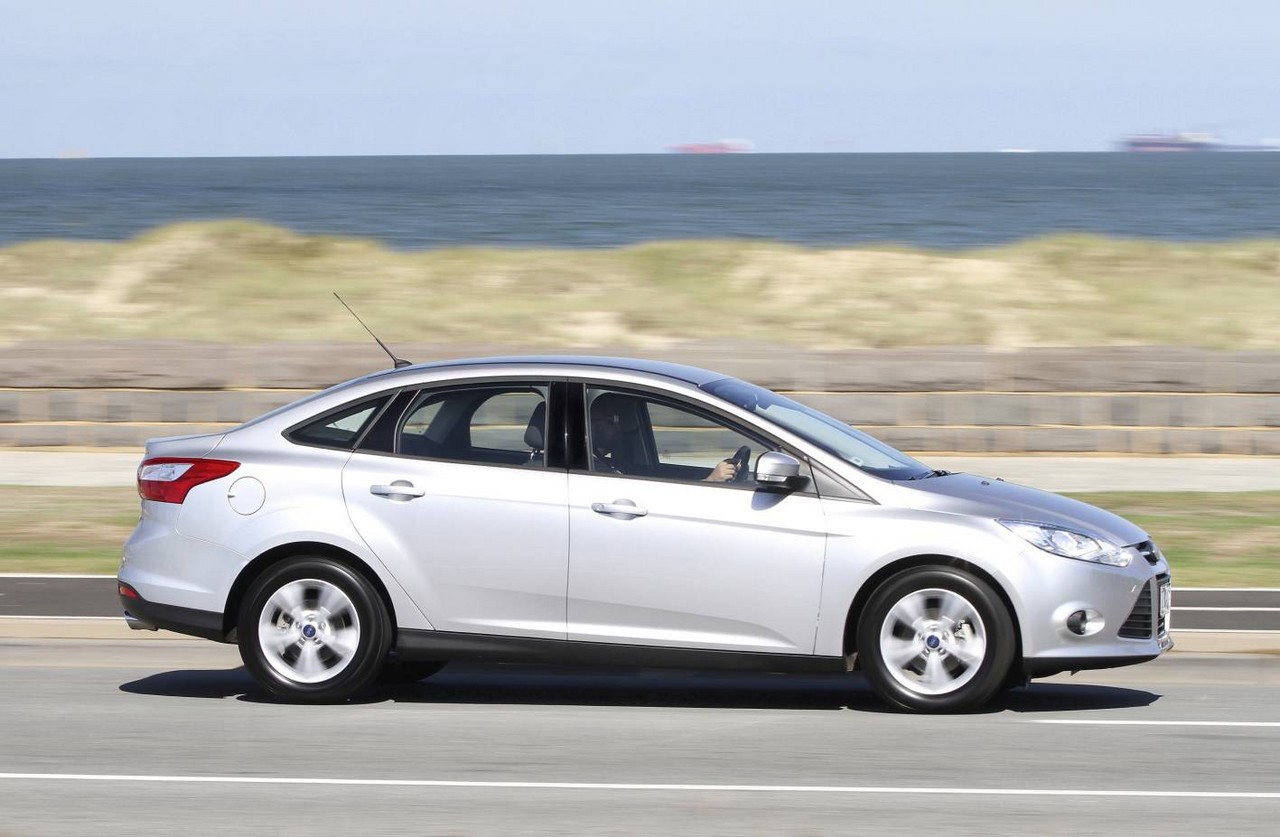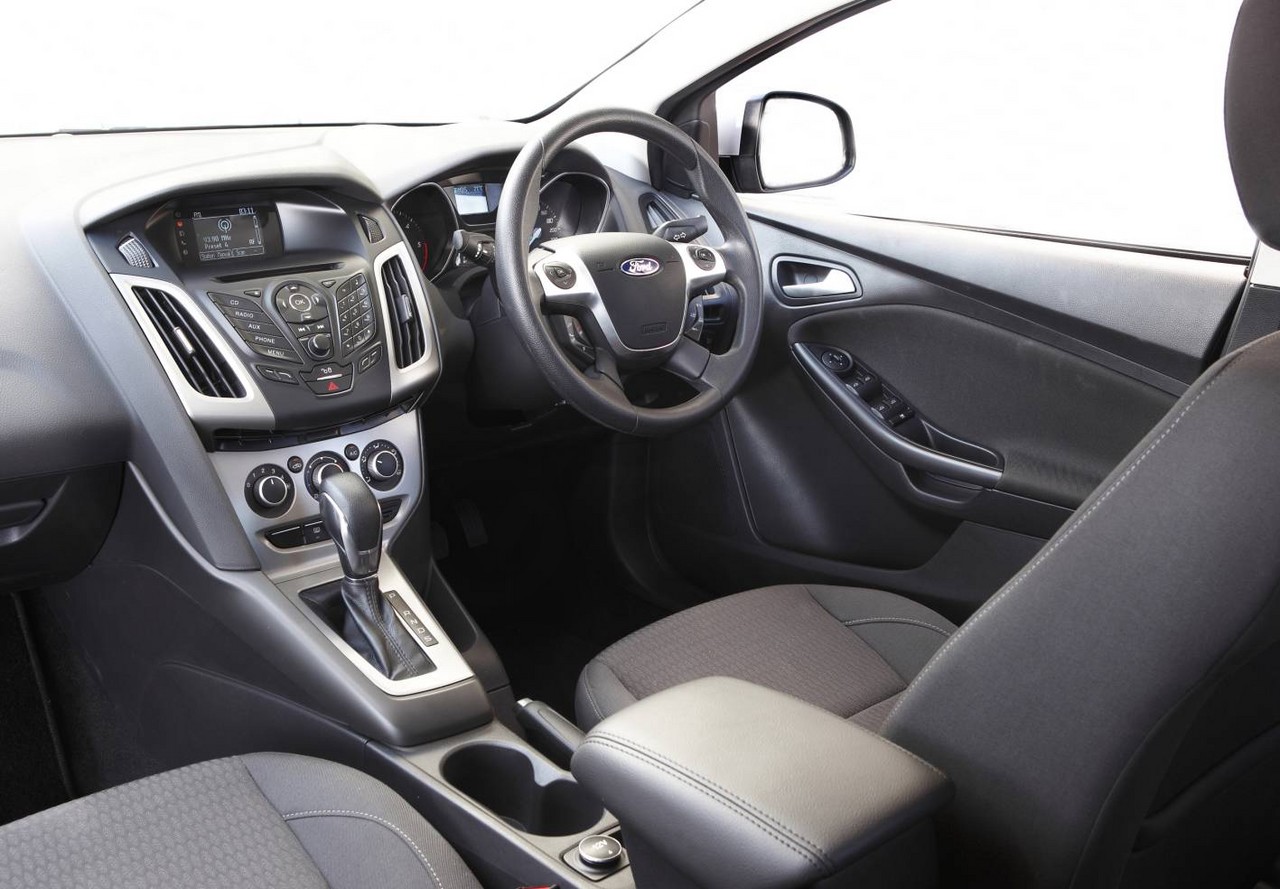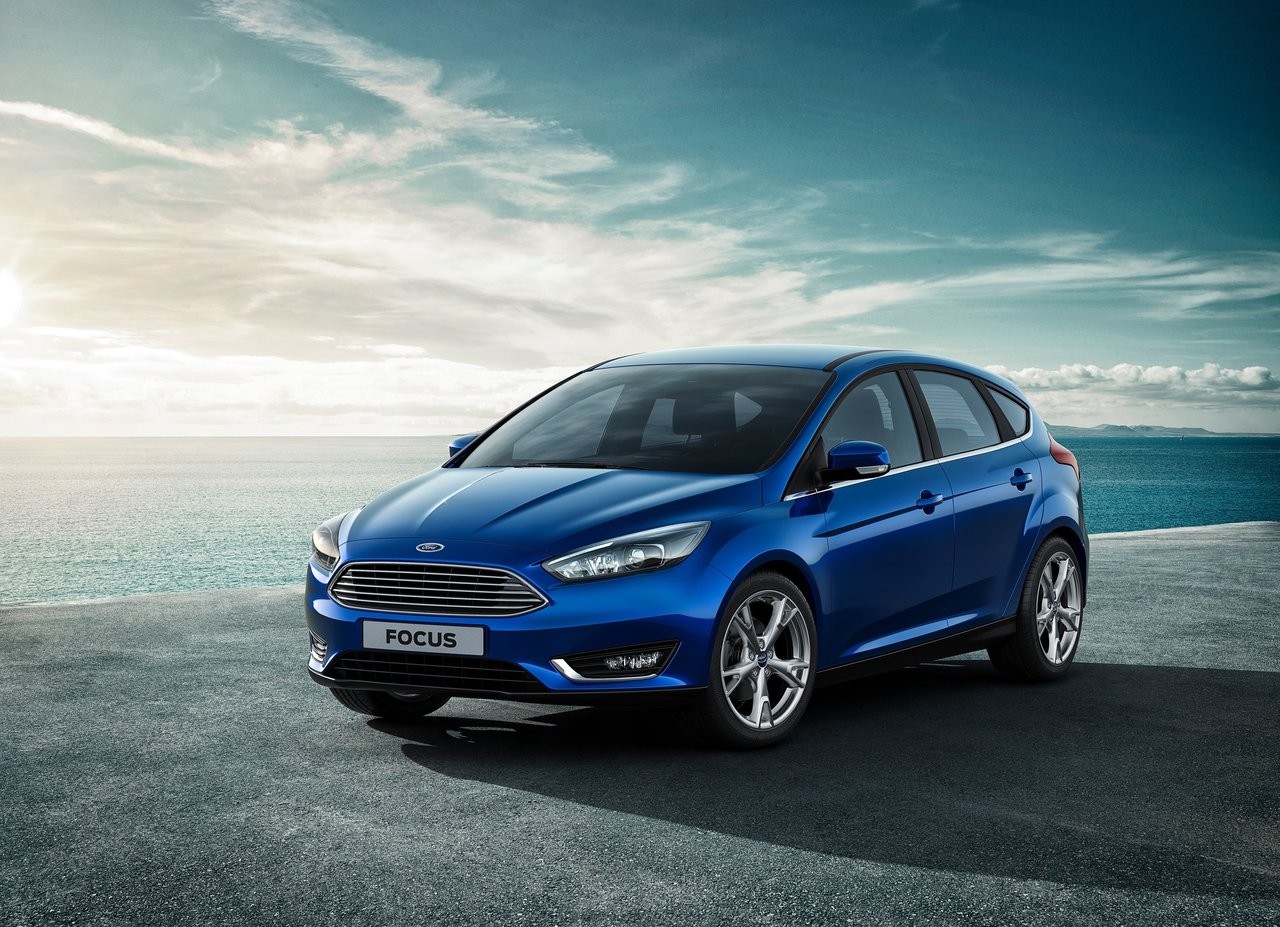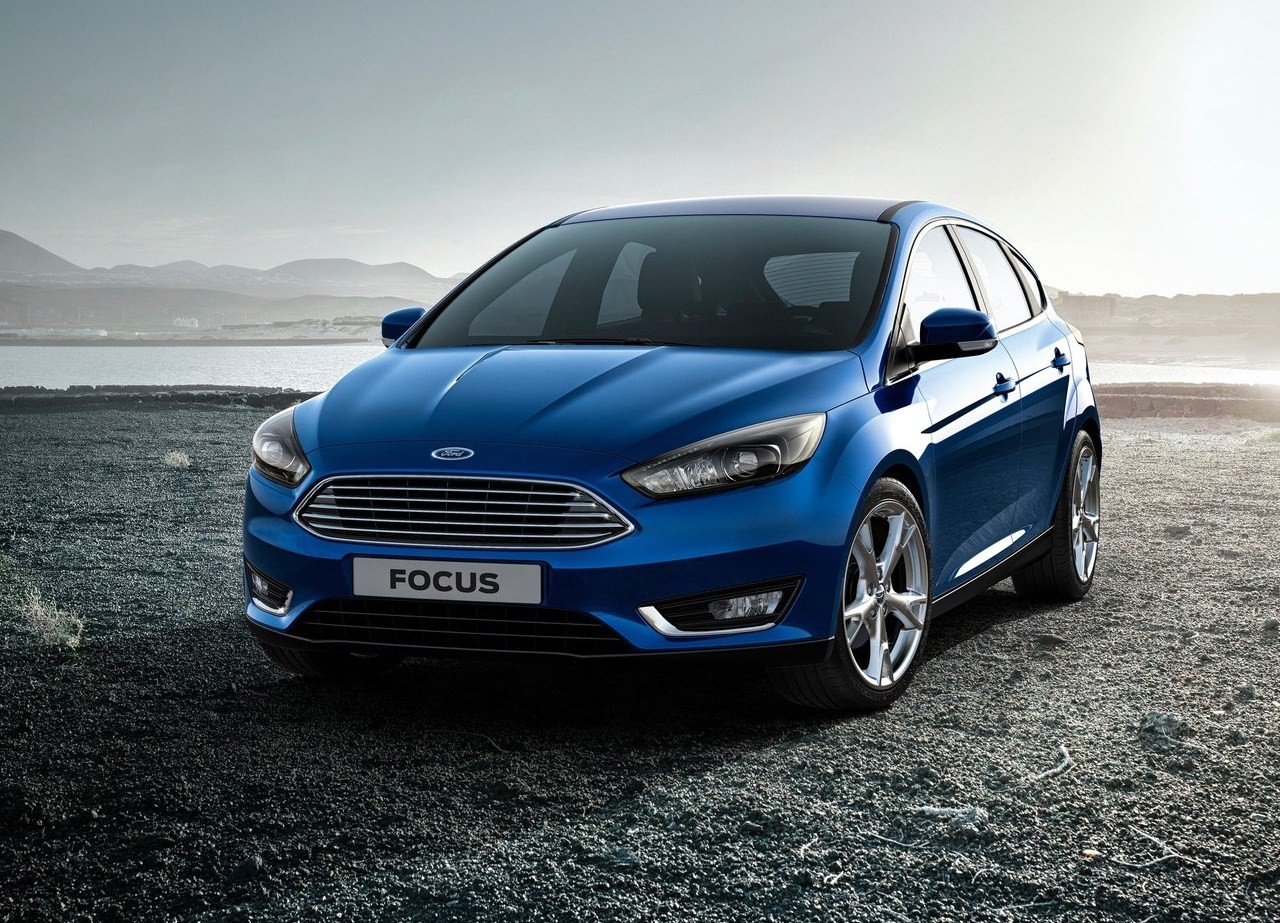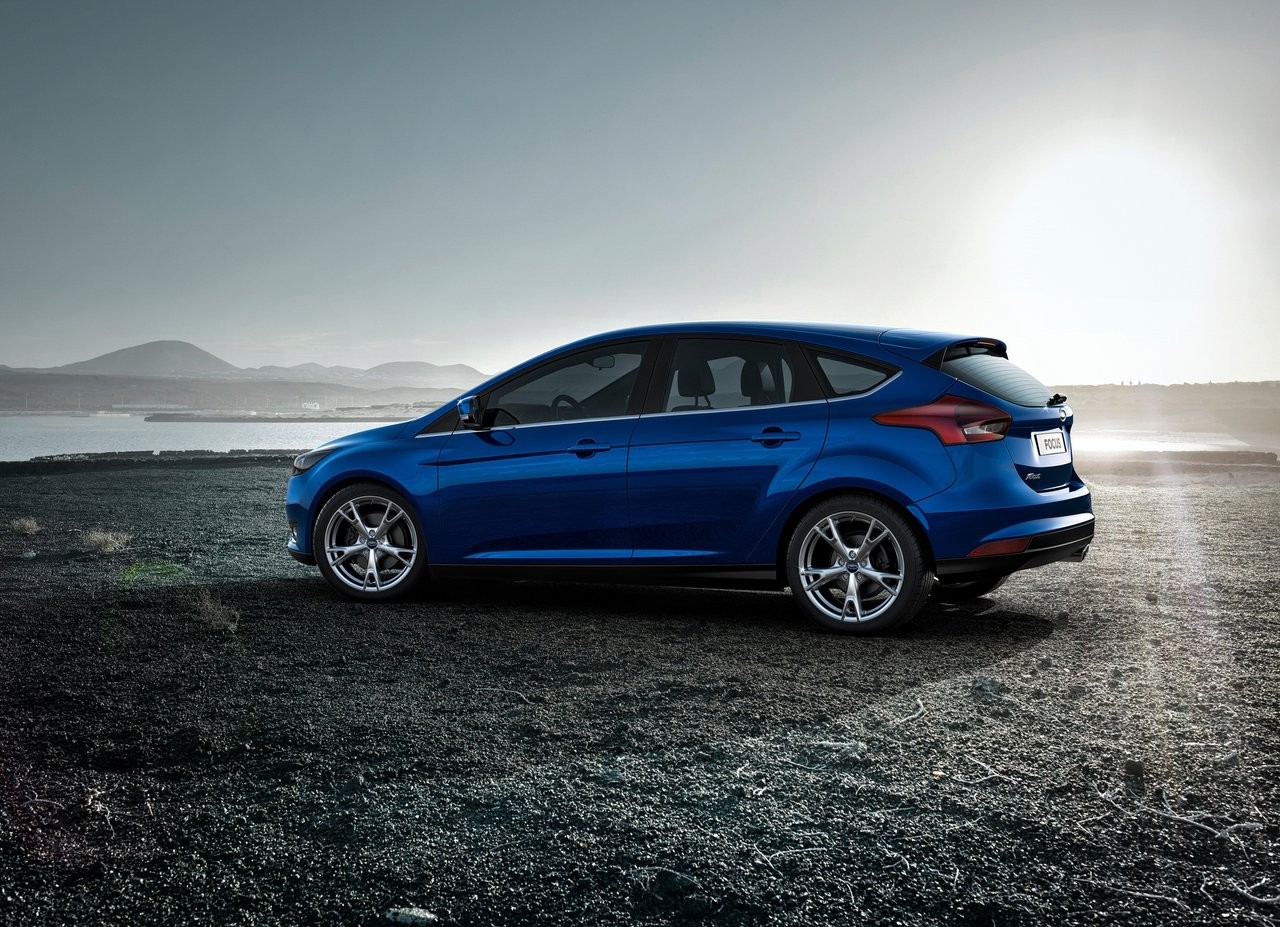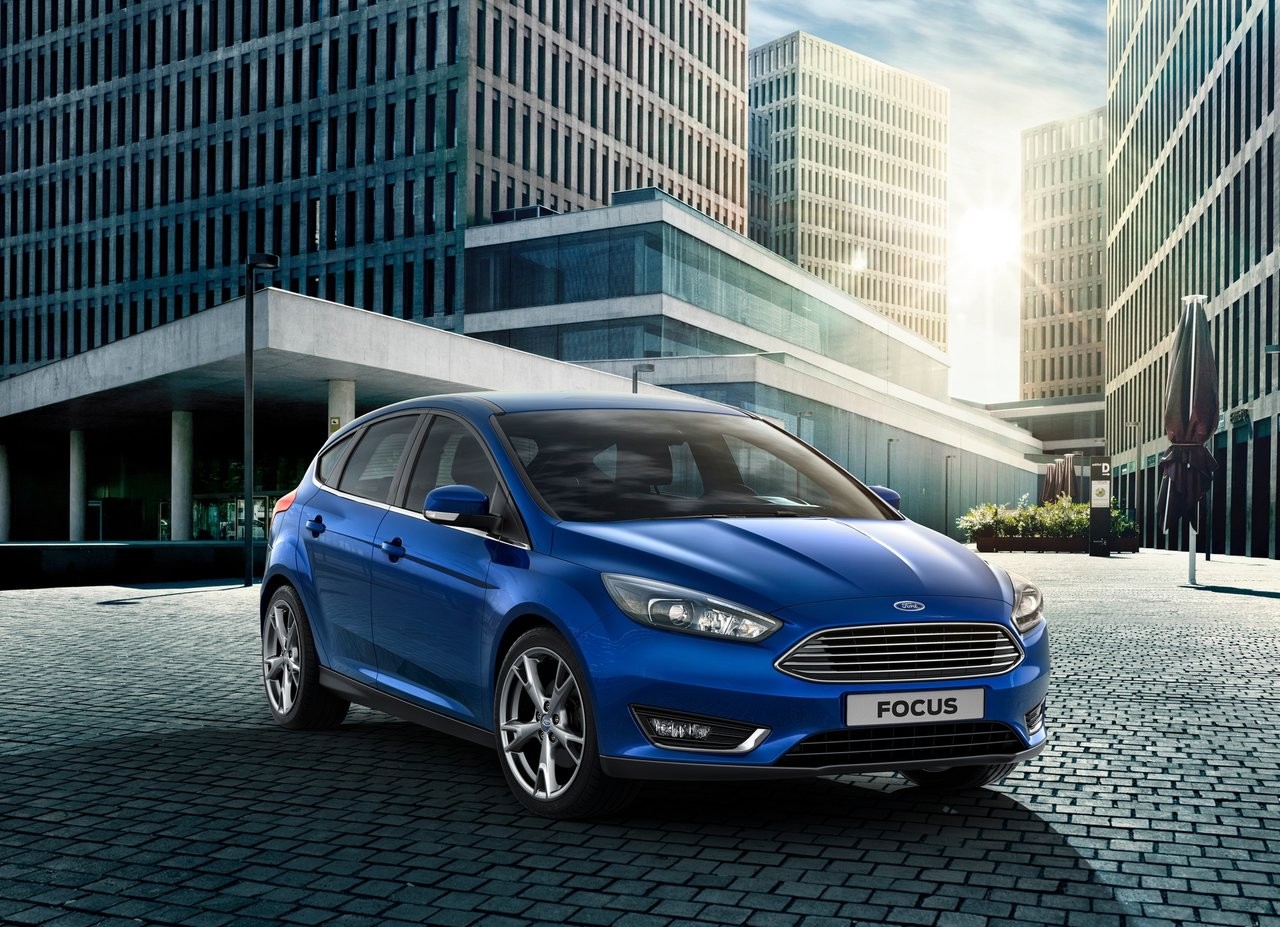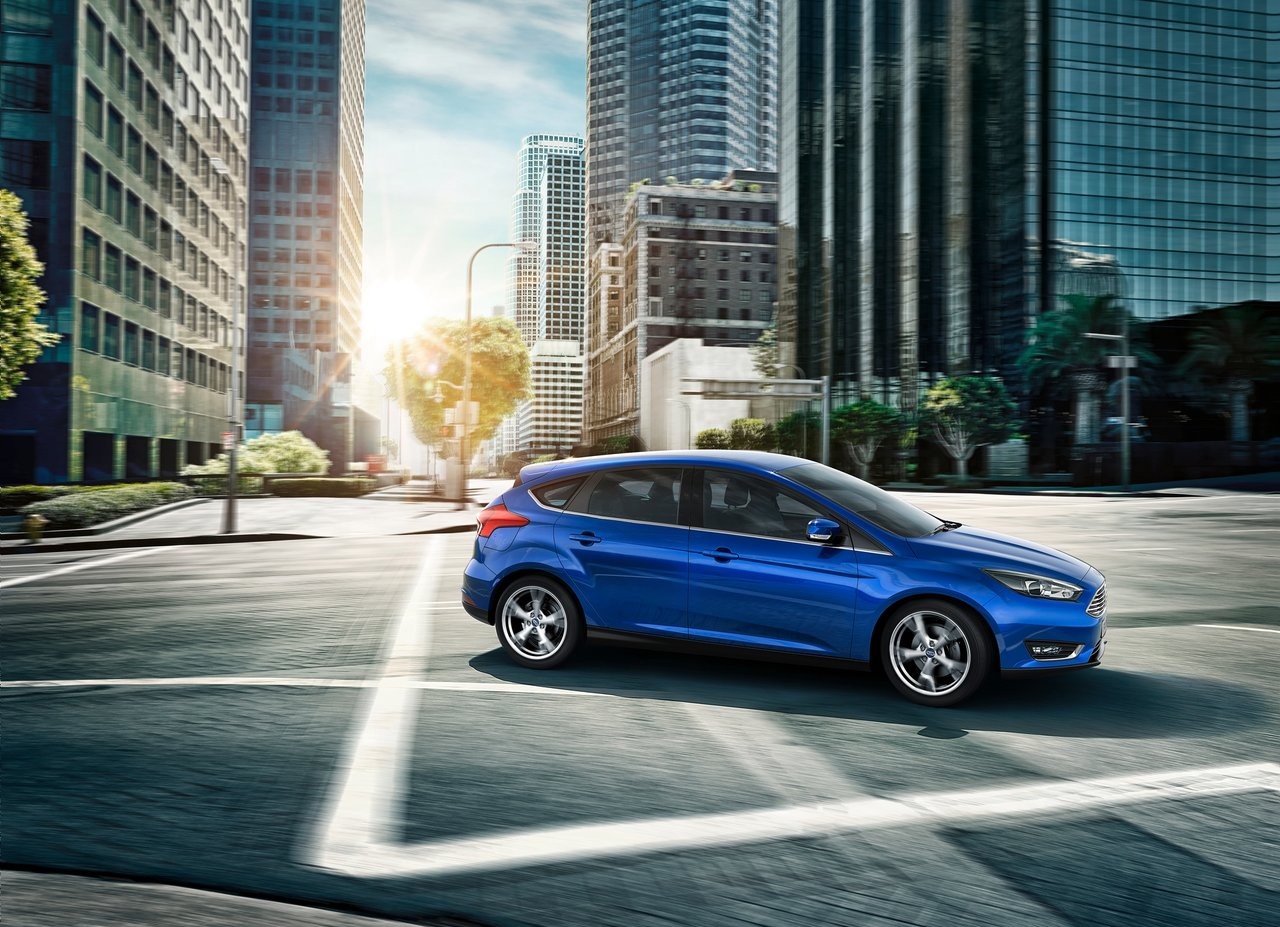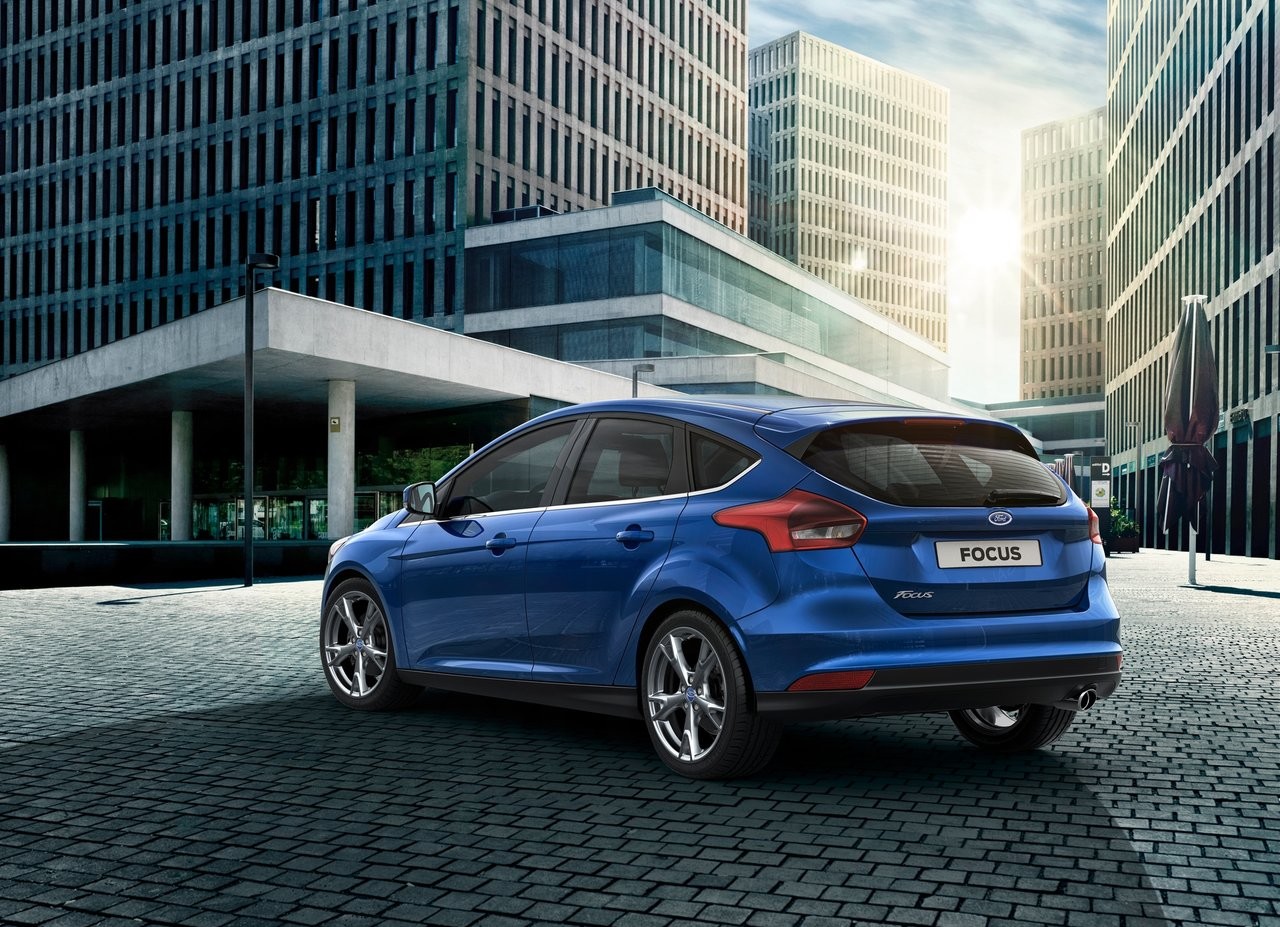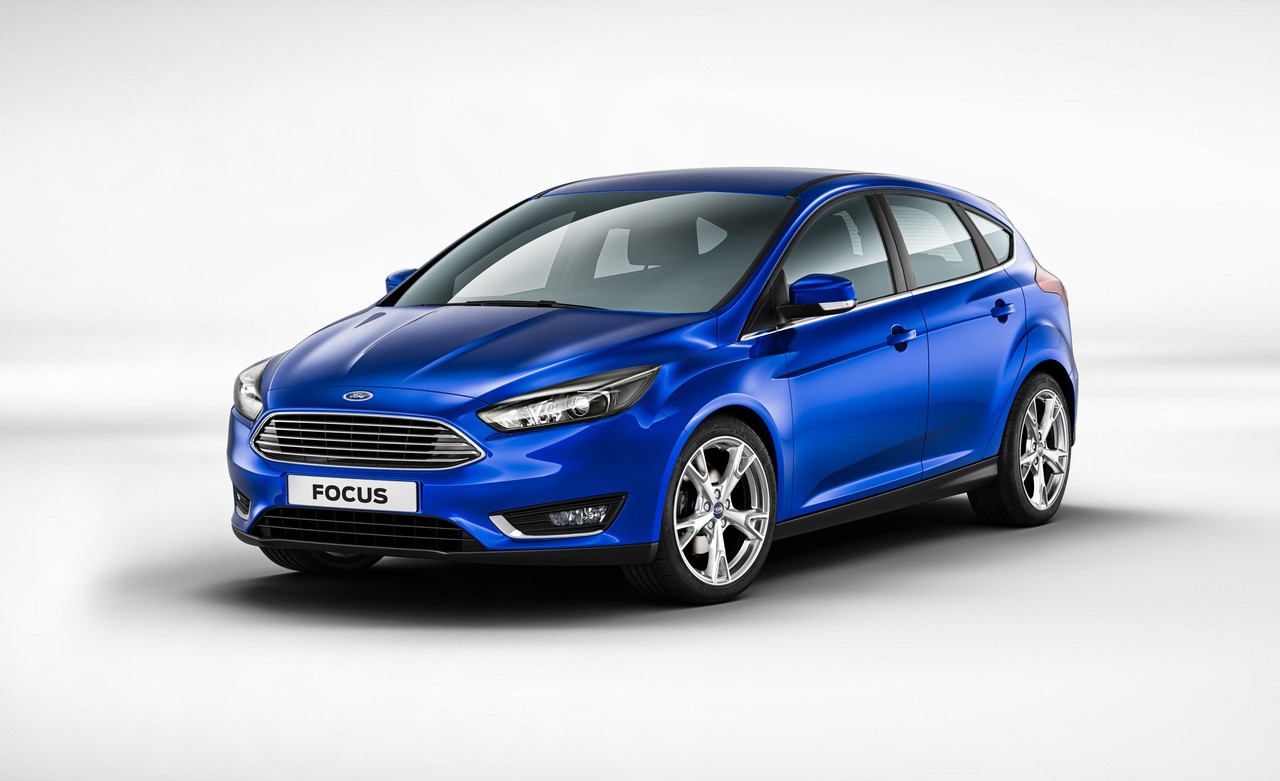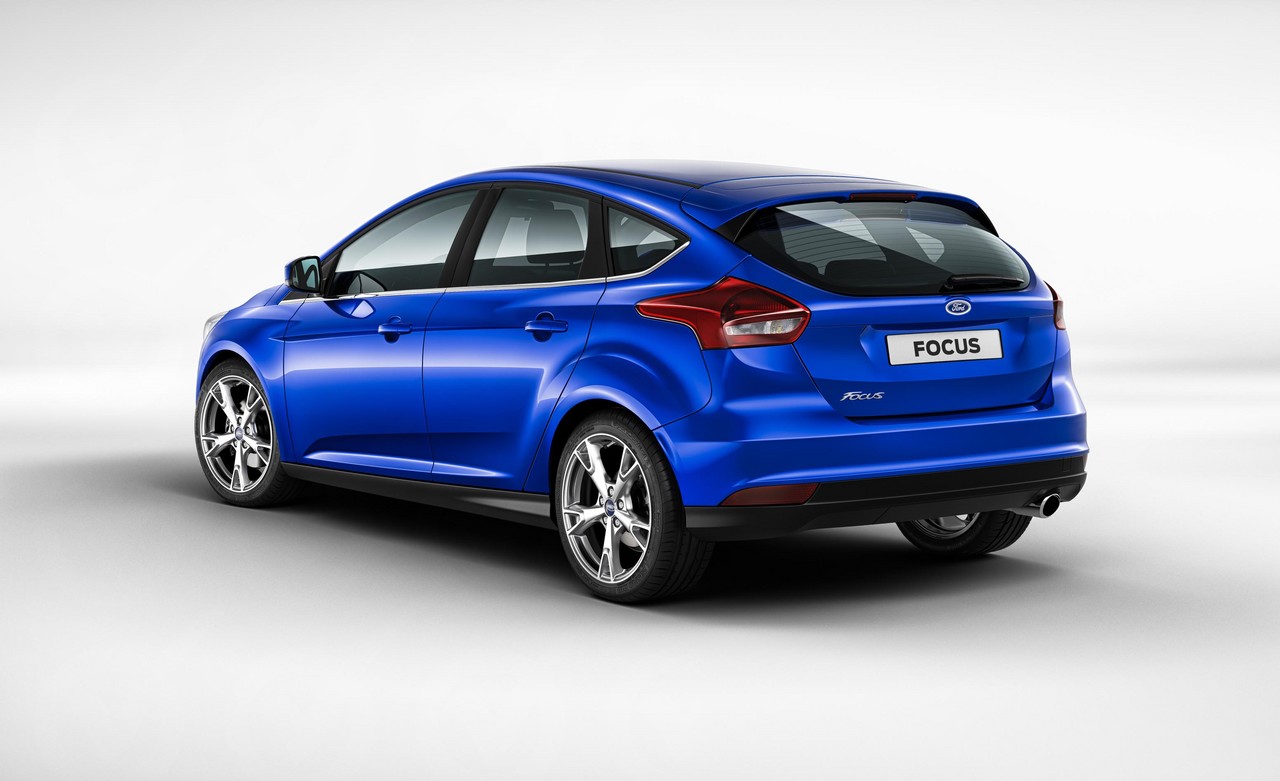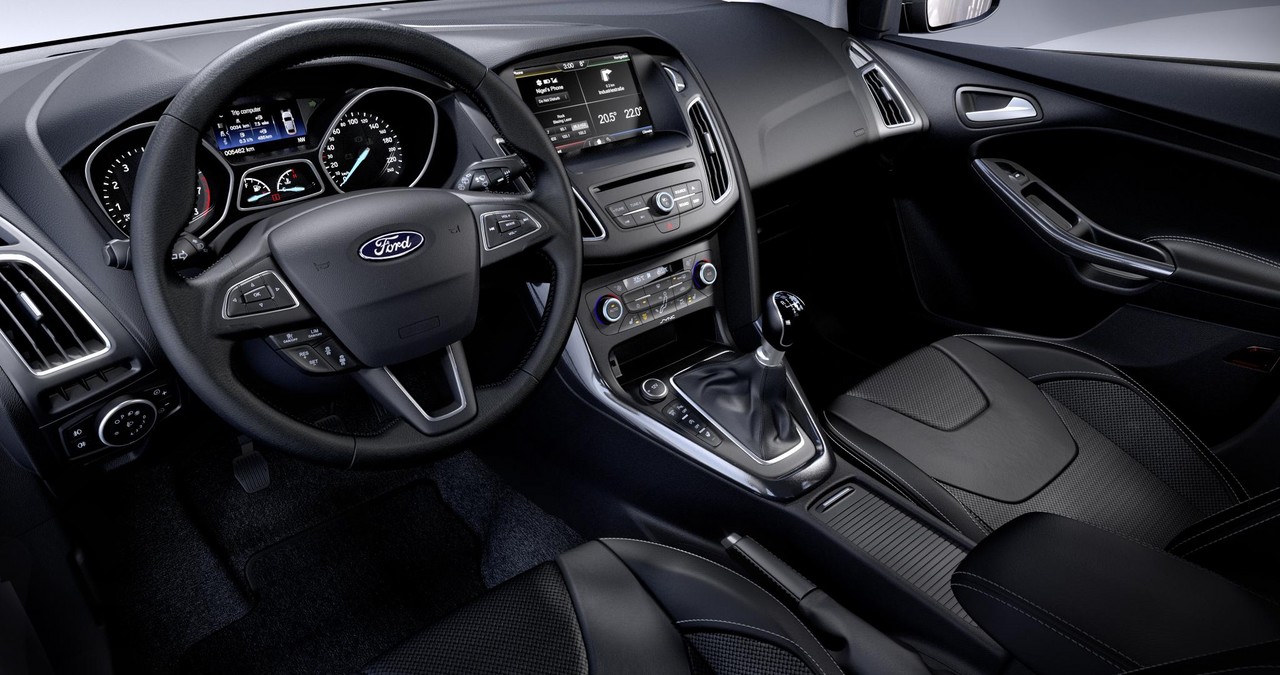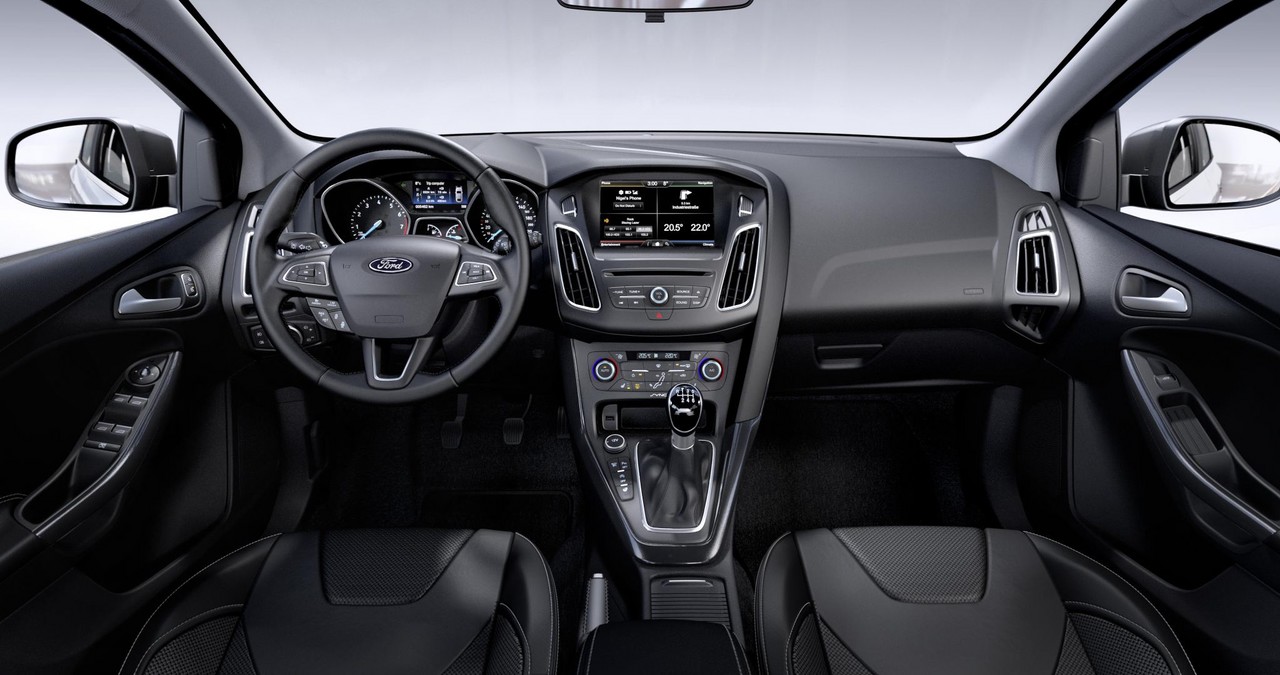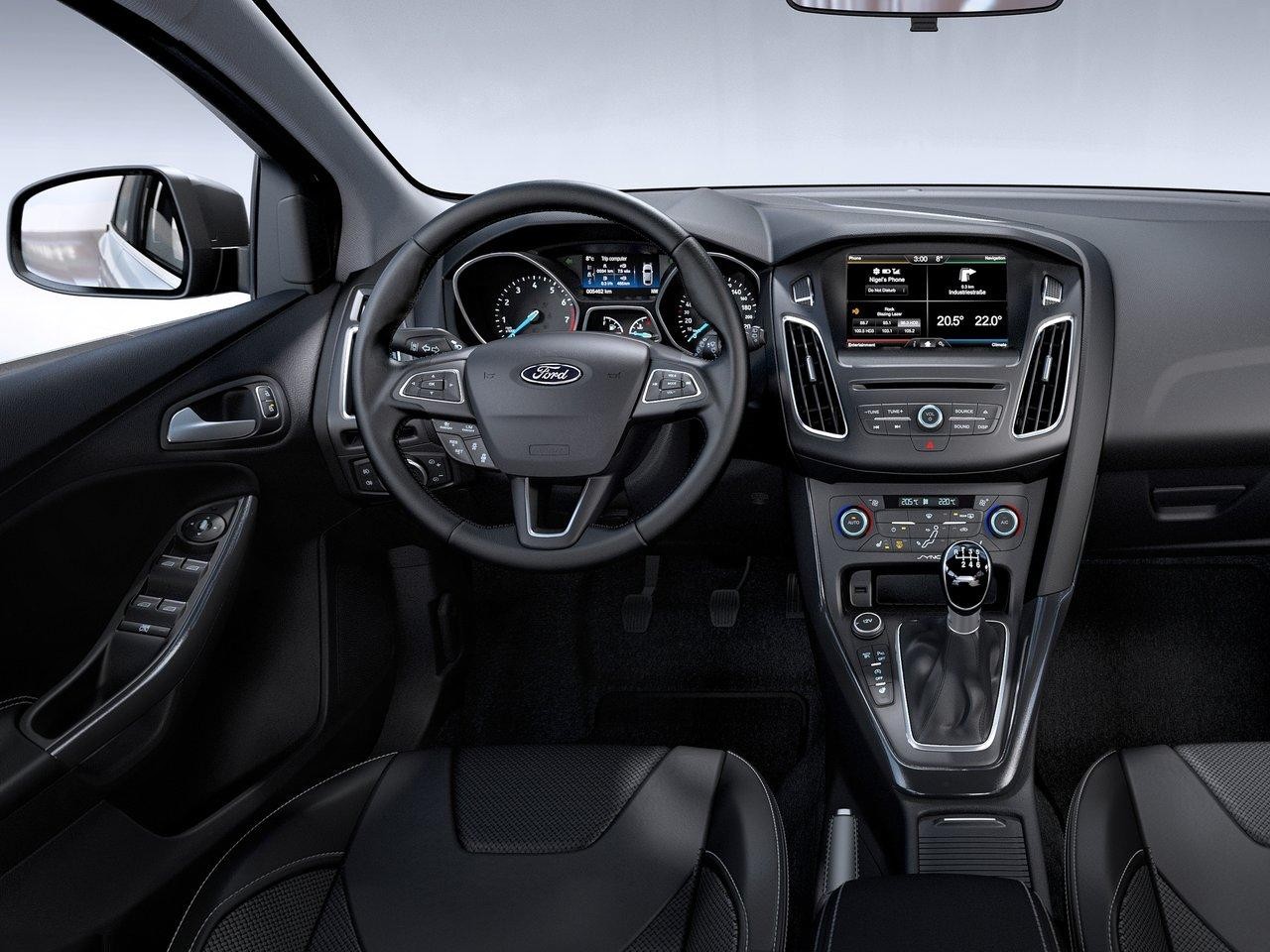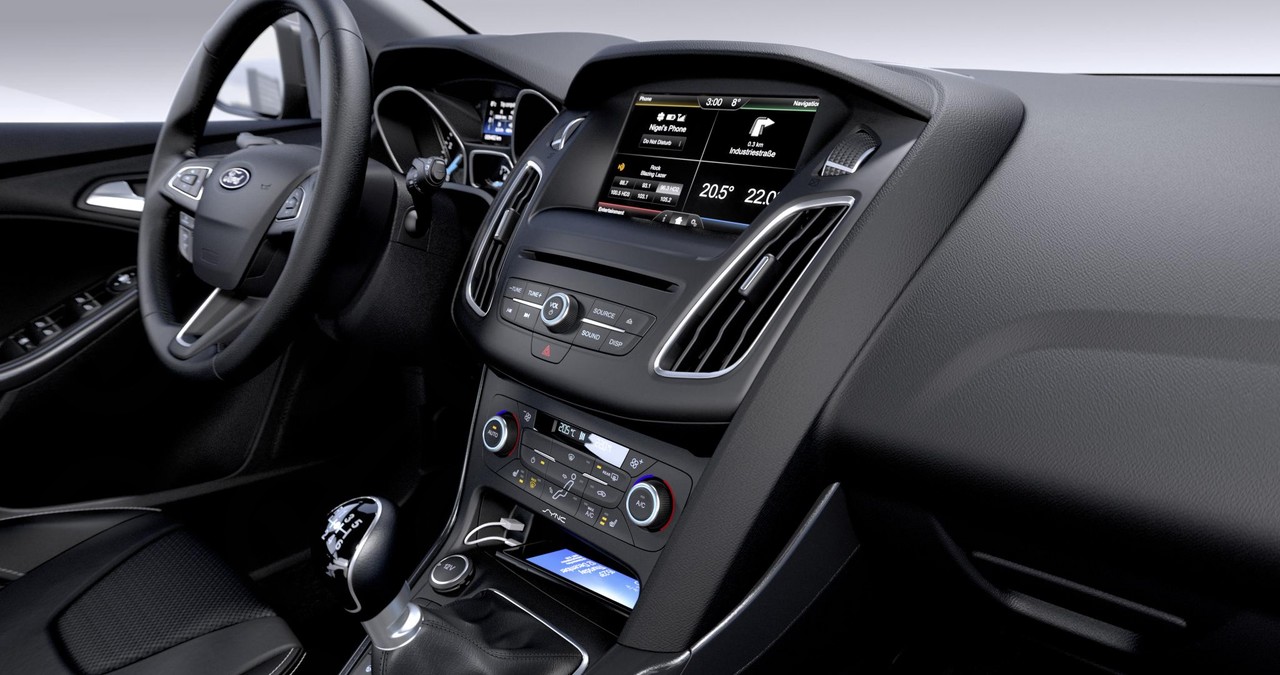
- Excellent dynamics
- Accurate steering
- Body feels solid and rigid
- Spacious interior
- Widespread problems with Powershift transmission
- 1.6-litre petrol engine only adequate
- Out-dated five-speed manual transmissions
- Thai-manufactured LW.II and LZ Focus have inferior build to German LW.I
Review: Ford LW.I Focus (2011-12)
Overview
Released in August 2011, the Ford LW Series I (LW.I) Focus was available as a small five-door hatch or four-door sedan. Manufactured in Saarlouis, Germany, the front-wheel drive LW.I Focus was available with a choice of three engines: 1.6- and 2.0-litre four-cylinder petrol engines (the latter with direct injection) and a 2.0-litre turbo-diesel unit; transmission choices were a five-speed manual or a six-speed double-clutch automated transmission (Ford’s ‘Powershift’). Furthermore, the LW.I Focus range consisted of Ambiente, Trend, Sport and Titanium variants.
Dimensions
Compared to the Mk.2 Focus , the five-door Mk.3 Focus hatch was 17 mm longer (at 4358 mm), 17 mm narrower (1823 mm), 41 mm taller (1484 mm) and had an 8 mm longer wheelbase (2648 mm). Compared to its hatch counterpart, the Mk.3 Focus sedan was 176 mm longer (at 4354 mm), though the other dimensions were unchanged. For the Mk.3 Focus, 55 per cent of the body shell was made from high strength steels while 26 per cent of the structure was formed from ultra high-strength and Boron steels. As a result, torsional rigidity for the five-door hatchbacks increased by 15 per cent.
Suspension and Torque Vectoring Control
The Mk.3 Focus had MacPherson strut front suspension, ‘Control Blade’ multi-link rear suspension and was fitted with Ford’s ‘Torque Vectoring Control’ system which behaved like a limited slip differential to adjust the distribution of torque between the front wheels to reduce understeer – and improve traction – when cornering.
| Body | Engine | Variant | Trans. | Peak power | Peak torque |
|---|---|---|---|---|---|
| 5dr hatch |
1.6-litre petrol I4 | Ambiente | 5sp man., 6sp DCT |
92 kW at 6300 rpm | 159 Nm at 4000 rpm |
| 2.0-litre petrol I4 | Trend, Sport |
5sp man., 6sp DCT |
125 kW at 6600 rpm | 202 Nm at 4450 rpm | |
| Titanium | 6sp DCT | ||||
| 2.0-litre turbo-diesel I4 | Trend, Sport, Titanium |
6sp DCT | 120 kW at 3750 rpm | 340 Nm at 2000-3250 rpm | |
| 4dr sedan |
1.6-litre petrol I4 | Ambiente | 6sp DCT | 92 kW at 6300 rpm | 159 Nm at 4000 rpm |
| 2.0-litre petrol I4 | Trend, Titanium |
6sp DCT | 125 kW at 6600 rpm | 202 Nm at 4450 rpm | |
| Sport | |||||
| 2.0-litre turbo-diesel I4 | Trend, Sport, Titanium |
6sp DCT | 120 kW at 3750 rpm | 340 Nm at 2000-3250 rpm |
Safety equipment
Standard safety equipment for the LW Focus included dual front airbags, front side airbags, full-length curtain airbags (i.e. for front and rear occupants), ABS, electronic brake force distribution, brake assist, electronic stability control, traction control and front seatbelts with pretensioners and load limiters.
Euro NCAP testing
In Euro NCAP testing , the Mk.3 Focus received a five star safety rating which included a 92 per cent adult occupant protection rating and an 82 per cent child occupant protection rating. In the offset crash test, there was a slight risk of serious lower leg injury for the driver. In the side impact test, there was a slight risk of serious chest injury for the driver and, in the more severe pole test, chest protection was rated as marginal for the driver.
Under ANCAP’s methodology , this testing resulted in a five star adult occupant protection rating with an overall score of 34.17 out of 37.
Features: Ambiente, Trend, Sport and Titanium
Standard features for the Focus Ambiente included 16-inch steel wheels (with a space-saving spare tyre), six speaker sound system with CD player, auxiliary input (3.5mm/USB/iPod) and MP3-compatibility, air conditioning, Bluetooth mobile phone integration with voice control, 60/40 split and folding rear seats, a leather-wrapped steering wheel with audio controls, remote central locking, power mirrors and windows, a reach and rake adjustable steering column, 12 volt power outlet, tinted windows, trip computer and immobiliser. Hatchback models were also fitted with a rear spoiler.
The Focus Trend was further equipped with 16-inch alloy wheels, cruise control (with steering wheel controls), front fog lights, rear parking sensors, a leather-wrapped gearshift and adjustable driver’s seat lumbar support.
Beyond this, the Focus Sport featured 17-inch alloy wheels with sports suspension, a nine speaker Sony audio system with a 4.2-inch multi-function TFT display, dual-zone climate control air conditioning, V-shape sports seats, automatic headlights, rain sensing wipers, a leather-wrapped steering wheel, power adjustable and heated door mirrors, an auto-dimming rear view mirror, ‘follow me home’ lighting and alloy scuff plates; hatchback models were also fitted with a larger rear spoiler. From October 2011, however, a satellite navigation system with 5.0-inch colour display was standard for the Sport and Titanium variants.
The Focus Titanium was distinguished by its 18-inch alloy wheels (with a 16-inch steel spare), combination leather/cloth seats, a four-way power adjustable driver’s seat, heated front seats, front parking sensors, semi-automated parallel parking (‘Active Park Assist’), keyless entry and start button. Optional features for the Titanium variants included adaptive cruise control (with a ‘Forward Alert’ function which could warn the driver of possible collisions, pre-tension the brakes and autonomously brake to reduce impact speed), bi-xenon headlights, daytime LED running lights and static cornering lamps.
Related links
- Brochure: Ford LW.I Focus (June 2011)
- Ford Newsroom: Ford LW Focus – Key Features at a Glance (June 2011)
- Ford Newsroom: New Ford Focus – Enhanced Safety Inside and Outside (June 2011)
- Ford Newsroom: New Ford Focus Offers States-Of-The-Art Active Safety Features (June 2011)
- Ford Newsroom: New Ford Focus Body Structure is Lighter, Stronger and Safer (June 2011)
- Ford Newsroom: New Ford Engines Combine Outstanding Performance and Economy (June 2011)
- Ford Newsroom: New Ford Focus Smart Driver Assistance Technologies (June 2011)
- Ford Newsroom: New Focus Sport and Titanium Now With Sat Nav (October 2011)
Review: Ford LW.II Focus (2012-15)
Overview
Released in August 2012, the LW Series II (LW.II) Focus was manufactured in Thailand. As part of the update, fuel economy for the 2.0-litre petrol and turbo-diesel engines was improved – in part due to the introduction of active grille shutters – and the range was reduced as the Sport sedan and turbo-diesel Titanium sedan variants were discontinued.
Visual changes for the Ambiente variants included new 16-inch wheel covers and body-coloured door handles; the Sport and Titanium variants, however, were distinguished by their ‘Sports Styling’ bodykit.
| Body | Engine | Variant | Trans. | Peak power | Peak torque |
|---|---|---|---|---|---|
| 5dr hatch |
1.6-litre petrol I4 | Ambiente | 5sp man., 6sp DCT |
92 kW at 6300 rpm | 159 Nm at 4000 rpm |
| 2.0-litre petrol I4 | Trend, Sport |
5sp man., 6sp DCT |
125 kW at 6600 rpm | 202 Nm at 4450 rpm | |
| Titanium | 6sp DCT | ||||
| 2.0-litre turbo-diesel I4 | Trend, Sport, Titanium |
6sp DCT | 120 kW at 3750 rpm | 340 Nm at 2000-3250 rpm | |
| 4dr sedan |
1.6-litre petrol I4 | Ambiente | 6sp DCT | 92 kW at 6300 rpm | 159 Nm at 4000 rpm |
| 2.0-litre petrol I4 | Trend, Titanium |
6sp DCT | 125 kW at 6600 rpm | 202 Nm at 4450 rpm |
Features
With the switch to Thai production, Ford’s ‘SYNC’ media system was fitted as standard across the range and included hands-free, voice-activated connectivity to a mobile phone or music player via USB and Bluetooth; the system could also read text messages aloud and enable music to be selected solely through voice commands. Standard features were also extended to include a fuel-saving ‘ECO’ driving mode, the Sport and Titanium variants were fitted with a rear-view camera and Titanium variants were further equipped with leather seats.
The Trend variants were available with an optional ‘Convenience Pack’ which added automatic headlights, rain-sensing wipers, an electrochromatic rear view mirror and ‘follow me home’ headlights.
Titanium variants were available with an optional ‘Sports Executive Pack’ which included an autonomous braking system (Ford’s ‘Active City Stop 2’), adaptive cruise control, bi-xenon headlights and a power sunroof. The autonomous braking system would operate if an obstacle was detected ahead of the vehicle and the vehicle was travelling at less than 30 km/h.
2013 updates
In September 2013, standard features were extended to include cruise control (previously omitted from Ambiente variants) and adjustable driver’s seat lumbar support (previously omitted from Ambiente and Trend variants). From October 2013, both the Ambiente and Trend variants were fitted with a full-size spare wheel.
July 2014 update
In July 2014, standard features for the LW.II Focus were extended to include rear parking sensors (previously omitted from Ambiente variants) and Ford’s SYNC Emergency Assistance function. In the event of an accident in which the airbags had deployed or the fuel cut-off switch was activated, Emergency Assistance would deliver a voice message to 000 operators and keep the line open for hands-free communication. Of the other variants,
- The Focus Trend was equipped with dual-zone climate control air conditioning and the previously optional Convenience Pack (automatic headlights, rain-sensing wipers, an electrochromatic rear view mirror and ‘follow me home’ headlights) as standard;
- The Focus Sport was fitted with the ‘Ford Keyfree’ system and push-button start (‘Ford Power Start Button’); and,
- The Focus Titanium gained a power-operated sunroof.
Related links
- Brochure: Ford LW.II Focus (September 2012)
- Specifications: Ford LW.II Focus (December 2012)
- Ford Newsroom: Segment-First Technology Available In The Enhanced Focus range (June 2012)
Review: Ford LZ Focus (2015-18)
Overview
Released in Australia in September 2015, the LZ Focus was solely available with a 1.5-litre turbocharged petrol engine which had an ‘Auto-Stop’ function that enabled it to shut down when the vehicle is stationary in traffic. Transmission options consisted of six-speed manual and six-speed automatic units; Ford’s double clutch ‘PowerShift’ transmission was no longer be offered. As part of a revised range, the Ambiente variants were discontinued, leaving the Focus Trend, Sport and Titanium.
The LZ Focus had a stiffer front subframe, revised suspension geometry, increased lateral stiffness of ‘steering-relevant’ suspension bushes, retuned shock absorbers and retuned electric power-assisted steering.
Visually, the LZ Focus could be identified by its sculpted bonnet, trapezoidal upper grille, reshaped lower grille, elongated fog lamp apertures, new rear fascia and thinner tail-lights. Inside, the LZ Focus had fewer controls and switches for the steering wheel and centre stack; other changes included black satin trim, chrome detailing and a new centre storage console with a sliding, integrated armrest.
| Body | Engine | Variant | Trans. | Peak power | Peak torque |
|---|---|---|---|---|---|
| 5dr hatch | 1.5-litre turbo petrol I4 | Trend, Sport |
6sp man., 6sp auto |
132 kW at 6000 rpm | 240 Nm at 1600-5000 rpm |
| Titanium | 6sp auto | ||||
| 4dr sedan | 1.5-litre turbo petrol I4 | Trend, Titanium |
6sp auto | 132 kW at 6000 rpm | 240 Nm at 1600-5000 rpm |
Safety equipment
Standard safety equipment for the LZ Focus was unchanged. For the Focus Titanium, however,
- The Active City Stop system operated at speeds up to 50 km/h (previously 30 km/h);
- A Blind Spot Information (BIS) system was fitted as standard; and,
- Rear Cross Traffic Alert (RCTA) was able to detect approaching vehicles within a range of 40 metres when reversing out of a parking space.
Features: Focus Trend
Standard features for the LZ Focus Trend included 16-inch alloy wheels, a six speaker sound system with USB/RCA inputs, Ford’s ‘SYNC 2’ in-car connectivity system with voice control, Bluetooth connectivity and audio streaming, a high-resolution eight-inch colour touch screen and satellite navigation, cloth seats, cruise control, front fog lamps, daytime running lights, a rear view camera, rear parking sensors, 60/40 split rear seats, remote central locking, power windows and mirrors,
As standard, the LZ Focus included Ford’s ‘MyKey’ which enables the owner to program a key that – when used – can limit top speed, maximum audio volume, disable the sound system until seatbelts are fastened and prevent the driver from deactivating driver assistance and safety technologies.
Features: Focus Sport
Compared to the Focus Trend, the Focus Sport was distinguished by its 17-inch alloy wheels, sports suspension, nine speaker Sony sound system with digital radio (DAB+), dual-zone climate control air conditioning, daytime LED running lights, automatic headlights, rain-sensing wipers, leather-wrapped steering wheel and gearshifter, proximity key (i.e. keyless entry), power folding door mirrors, auto-dimming rear view mirror, push-button start, ambient lighting and puddle lamps.
Visual cues for the Focus Sport included a sports bodykit (front and rear extensions, side skirts and rear spoiler), chrome belt line moulding and LED tail-lights.
Features: Focus Titanium
Relative to the Focus Sport, the Focus Titanium was fitted with 18-inch alloy wheels, front parking sensors, leather appointed seats and front sports seats. The Focus Titanium also featured:
- Enhanced Active Park Assist featuring Perpendicular Parking: could identify suitably-sized parallel parking spaces and provide automated steering into parallel and perpendicular parking spaces;
- Park-Out Assist: provided automated steering for reversing out of a parallel parking space once the driver had indicated either left or right; and,
- Side Parking Aid: provided a visual representation and audible warning of obstacles to the front, rear and sides of the vehicle.
Related links
